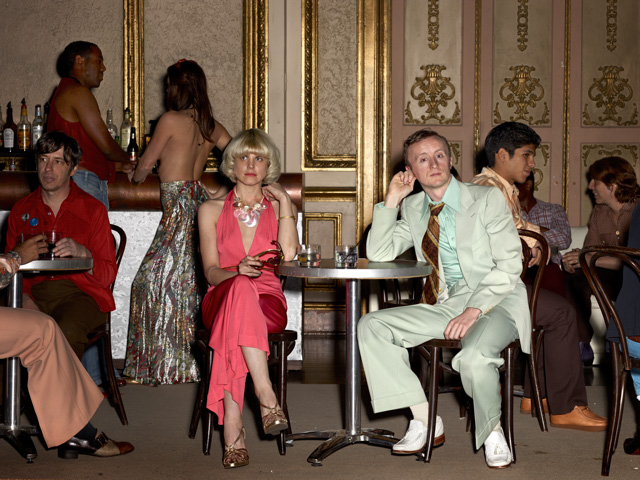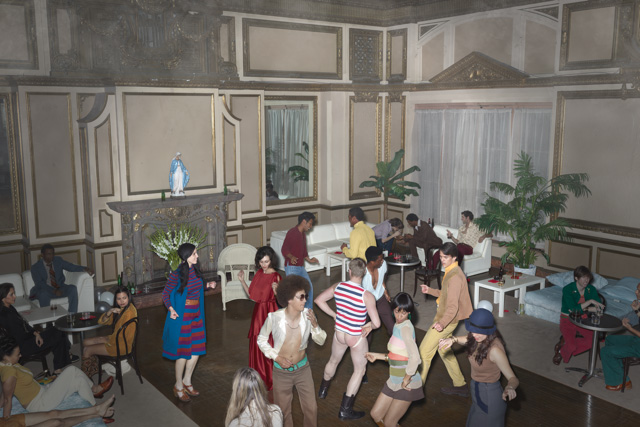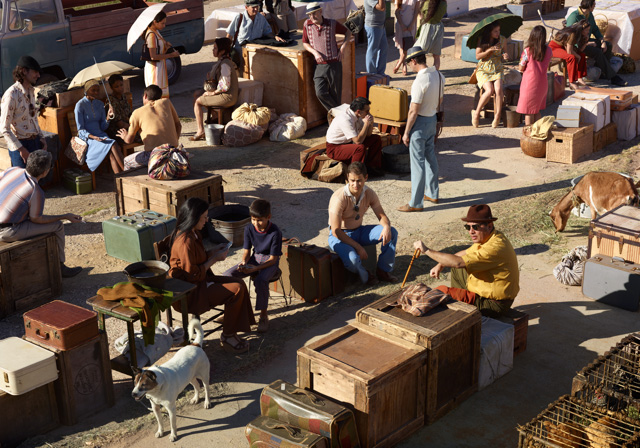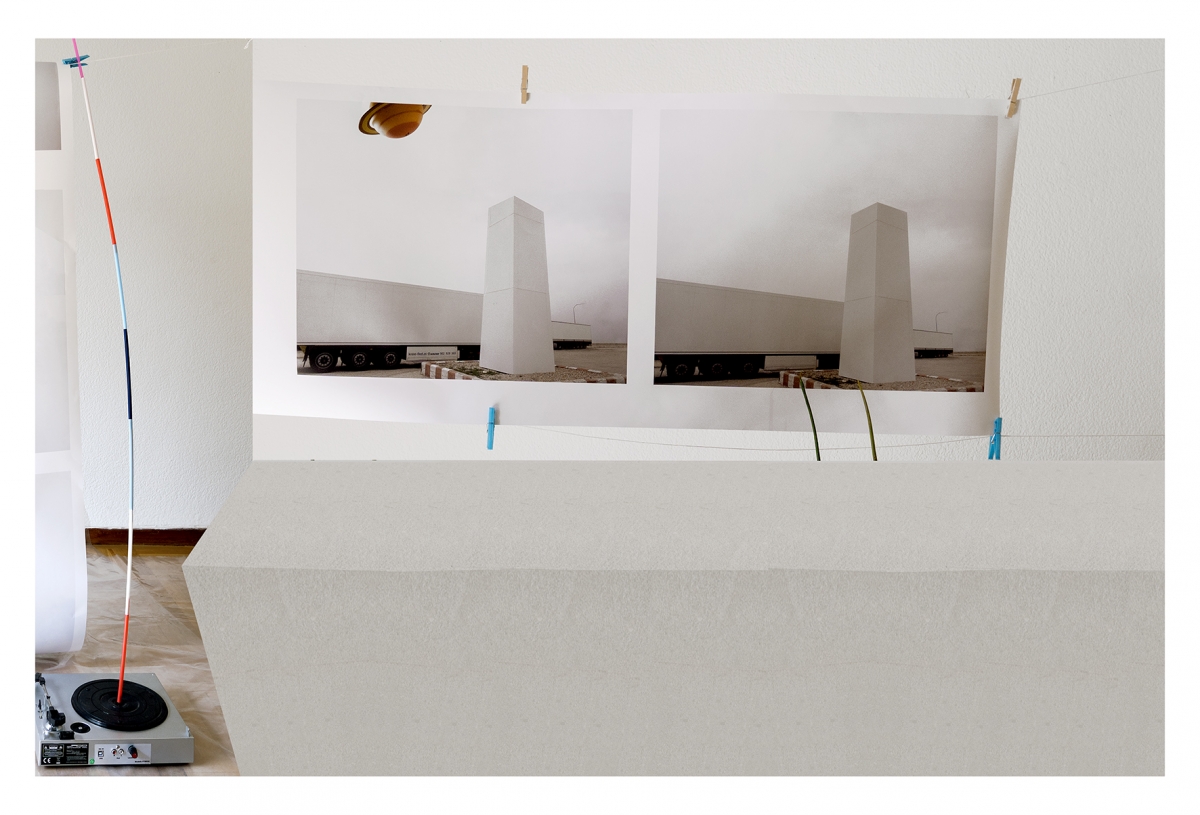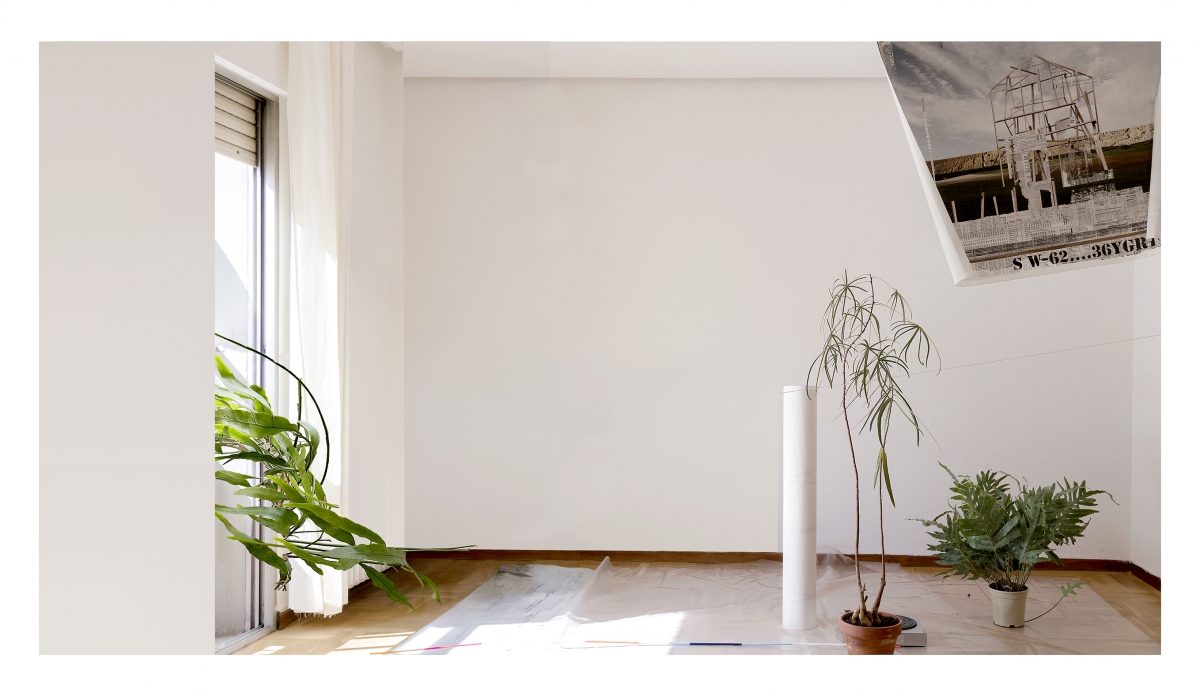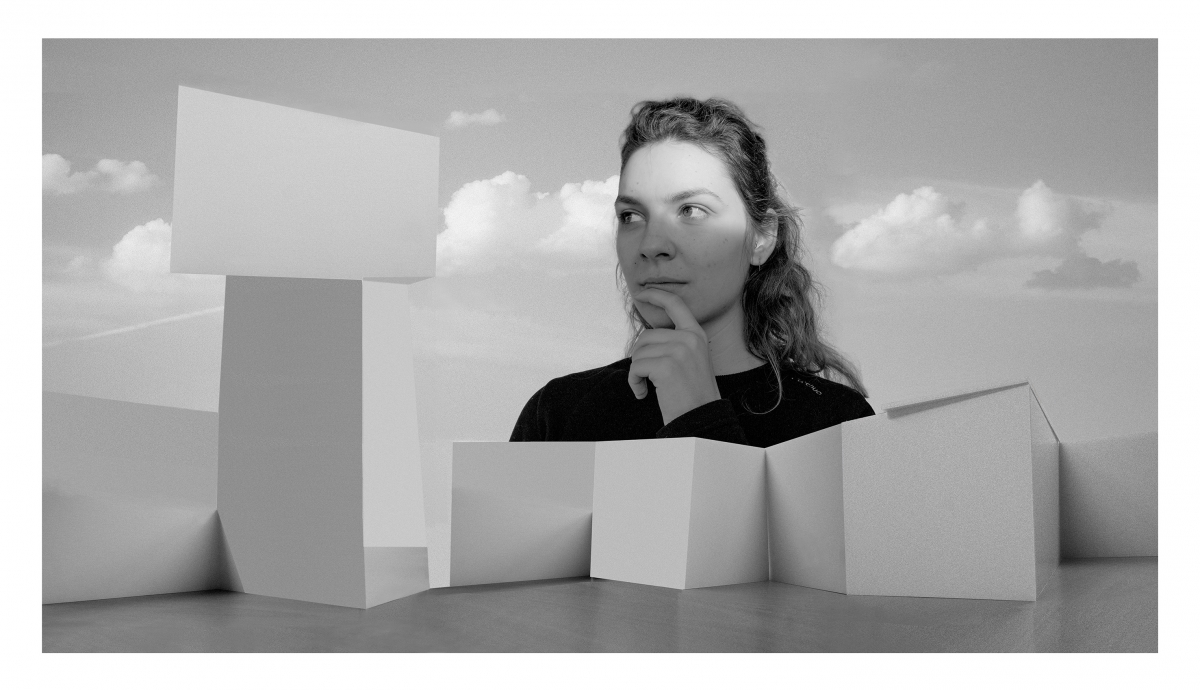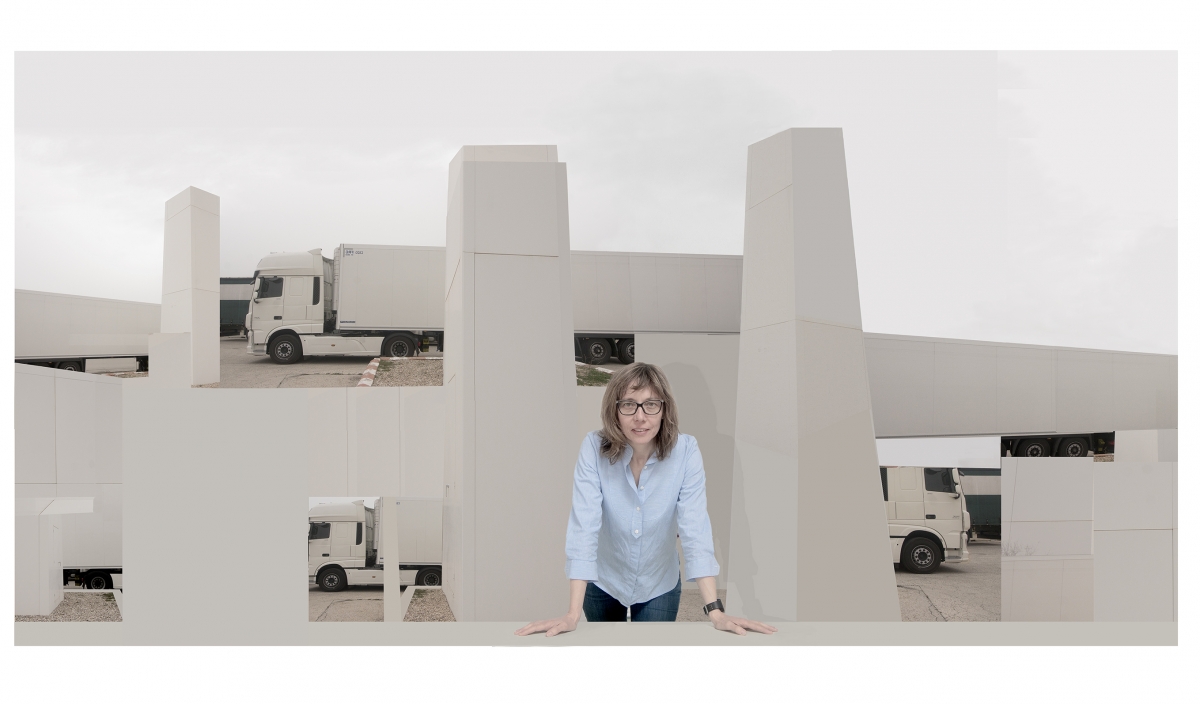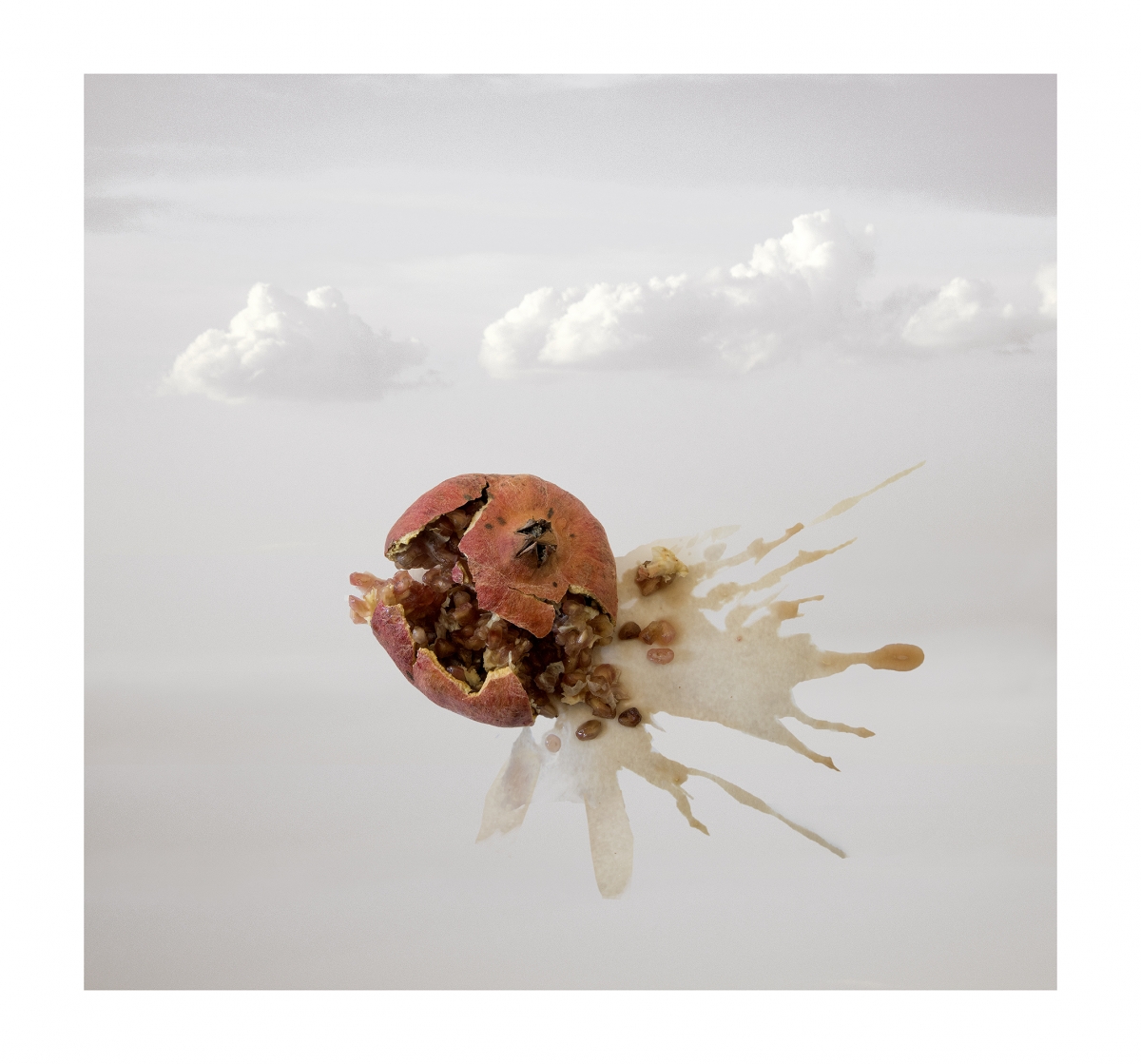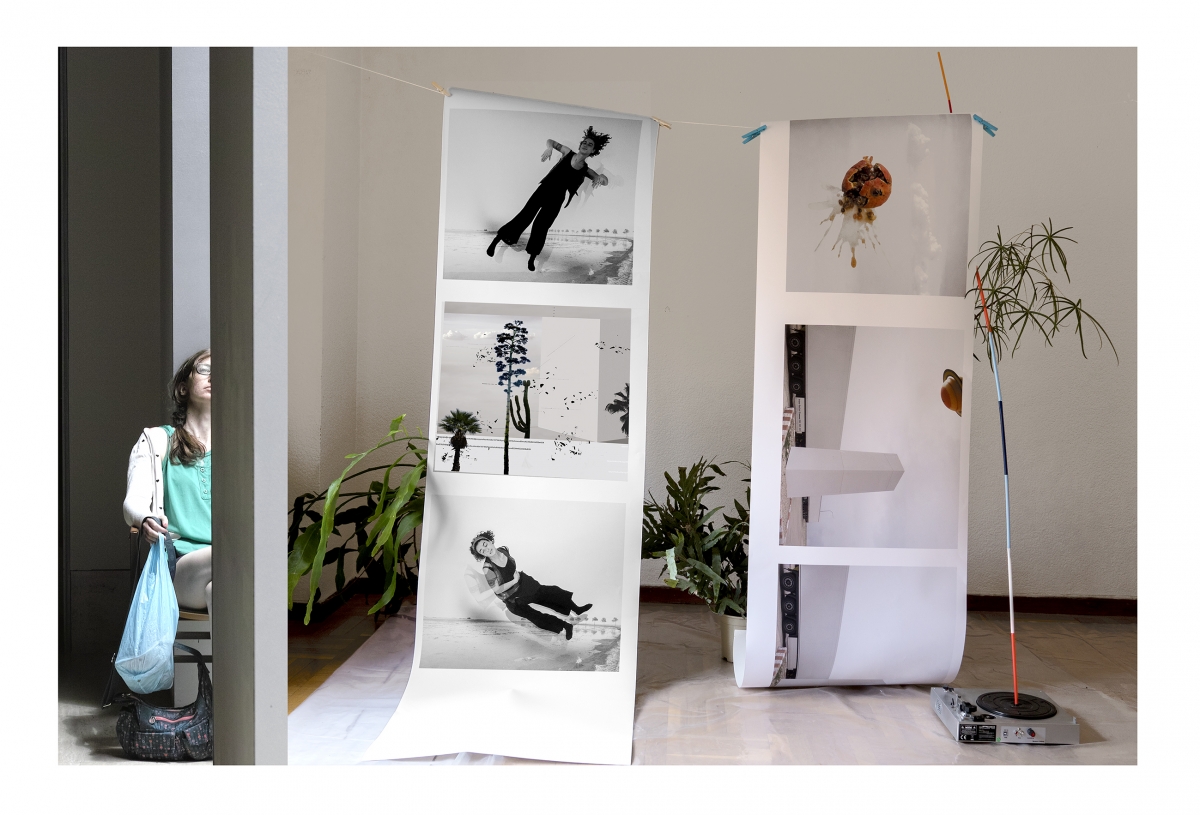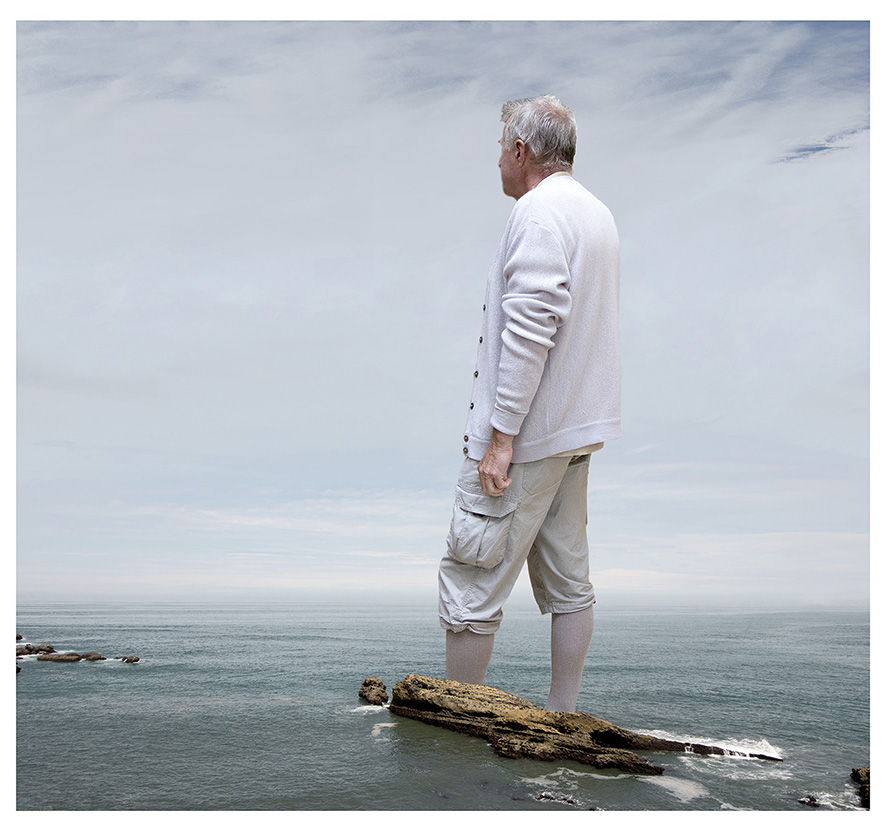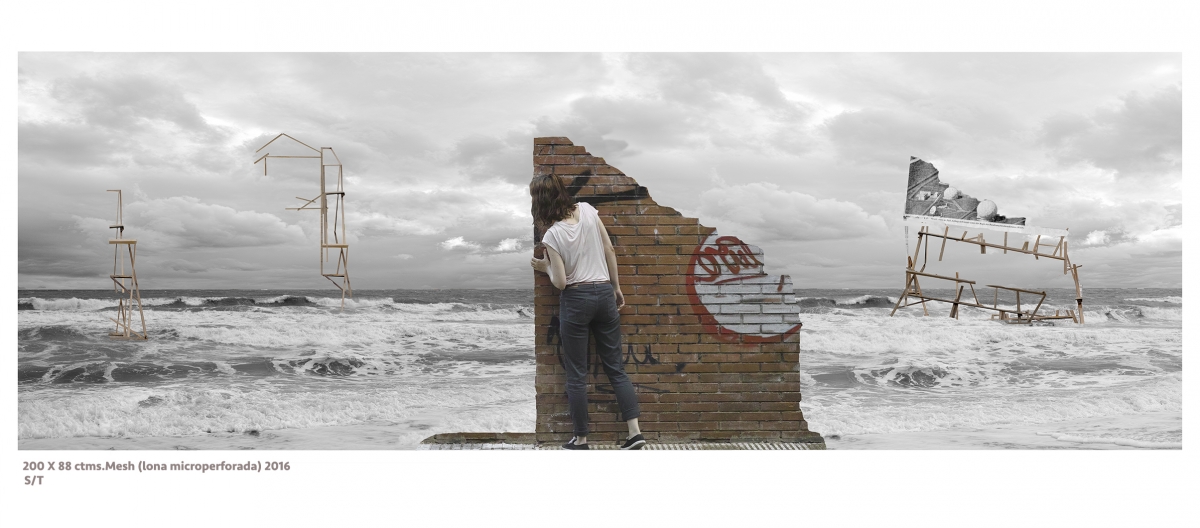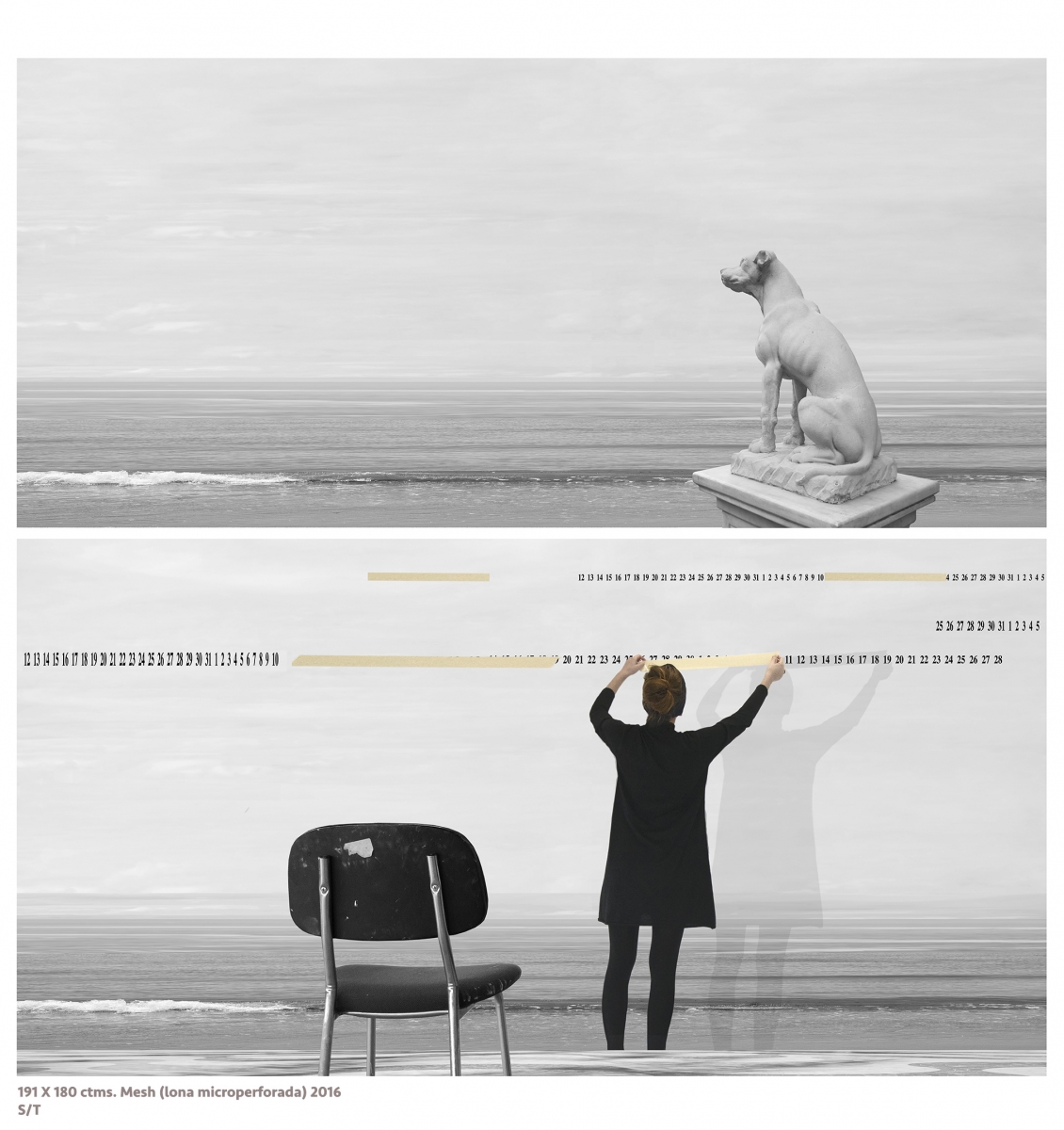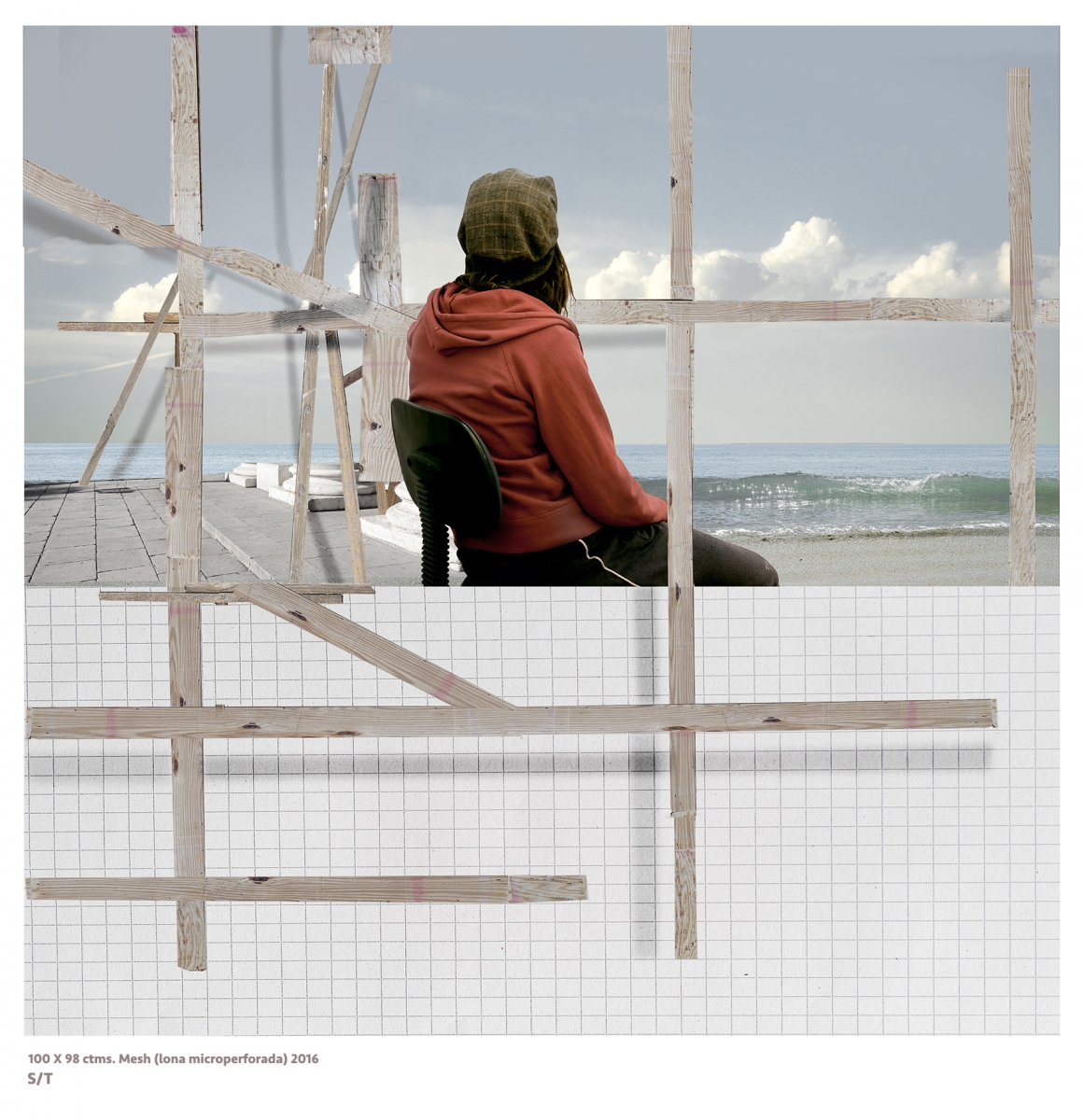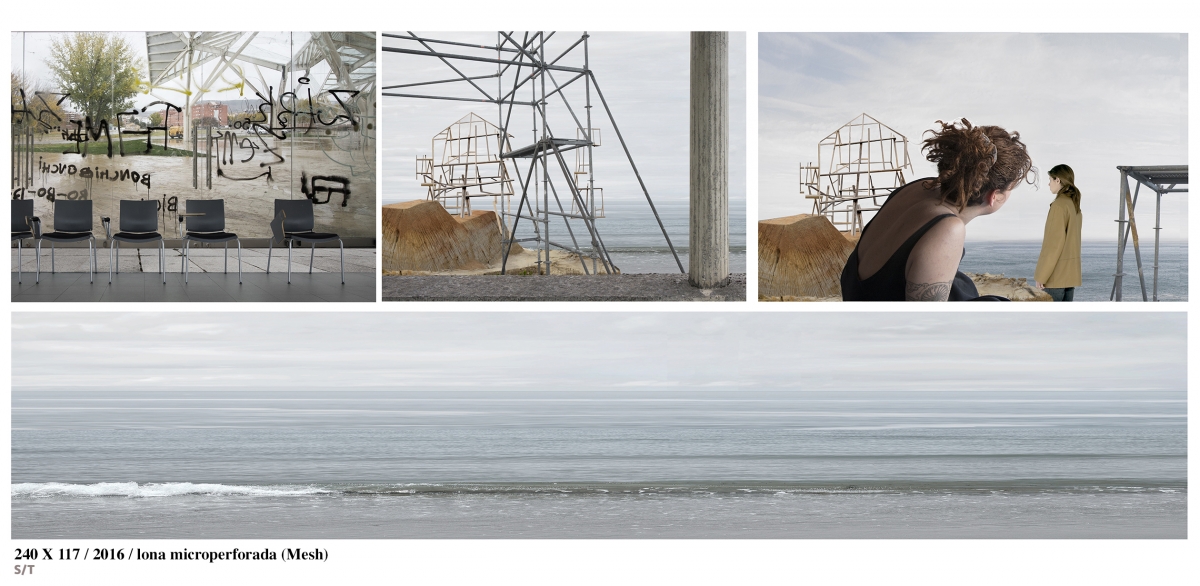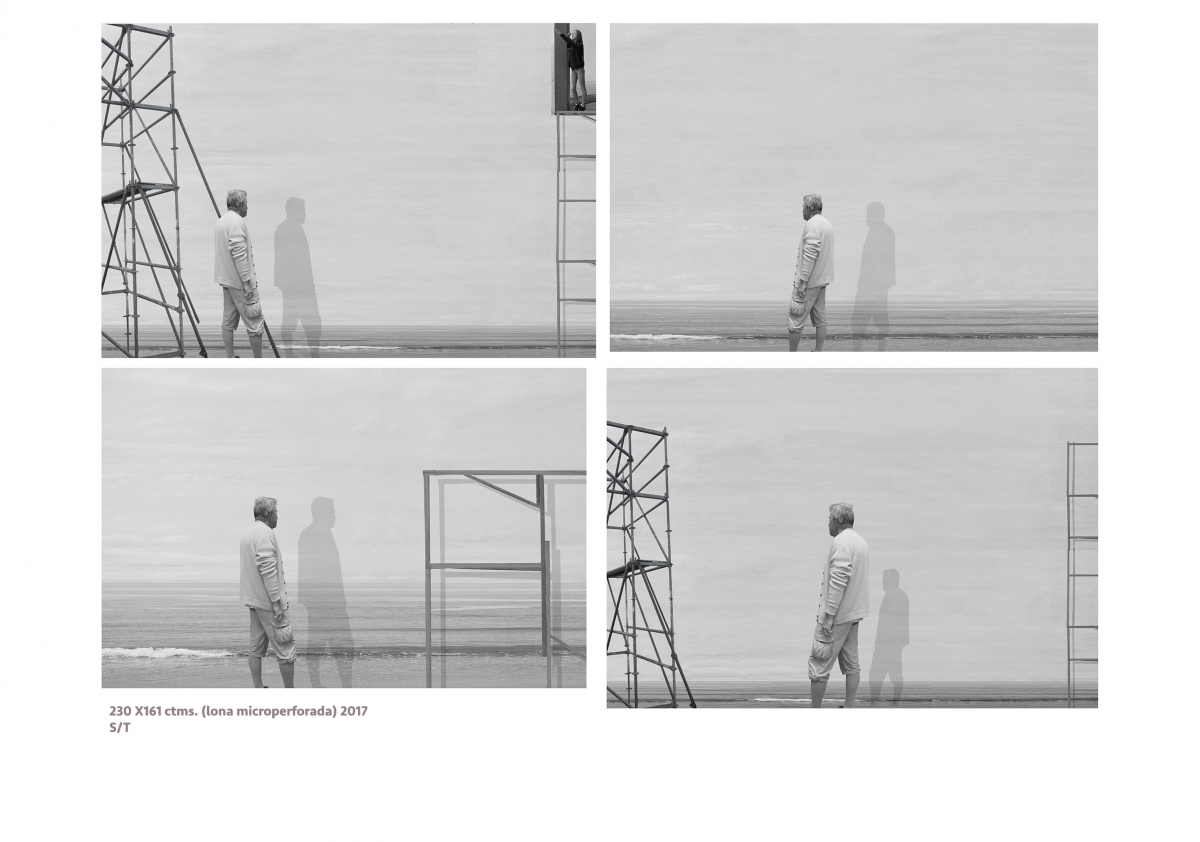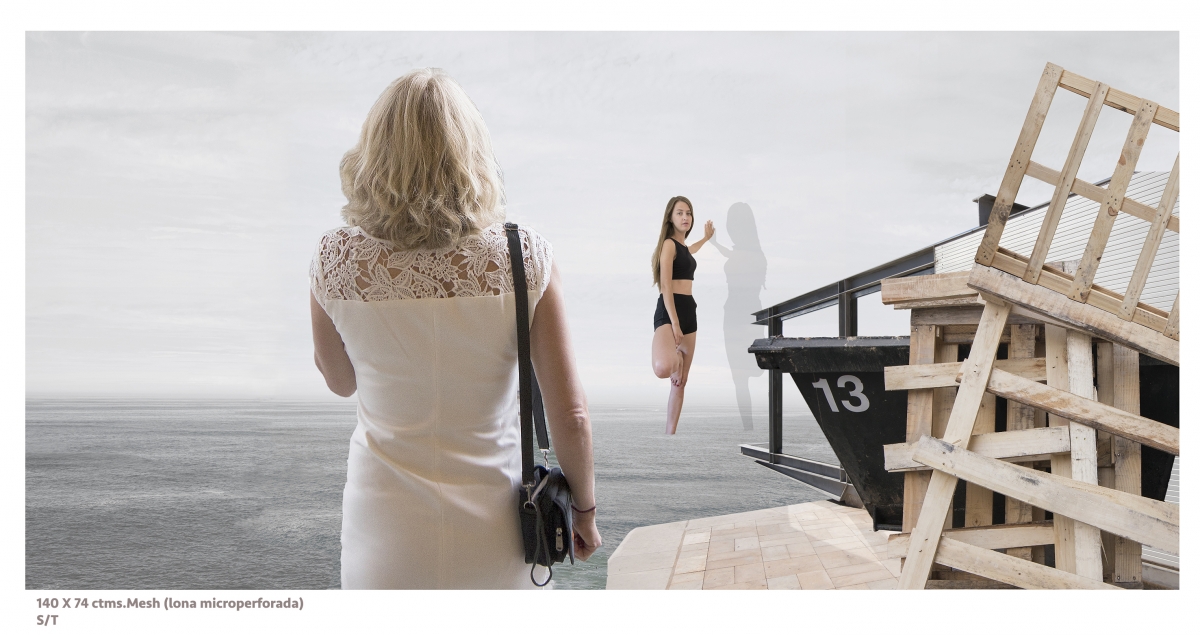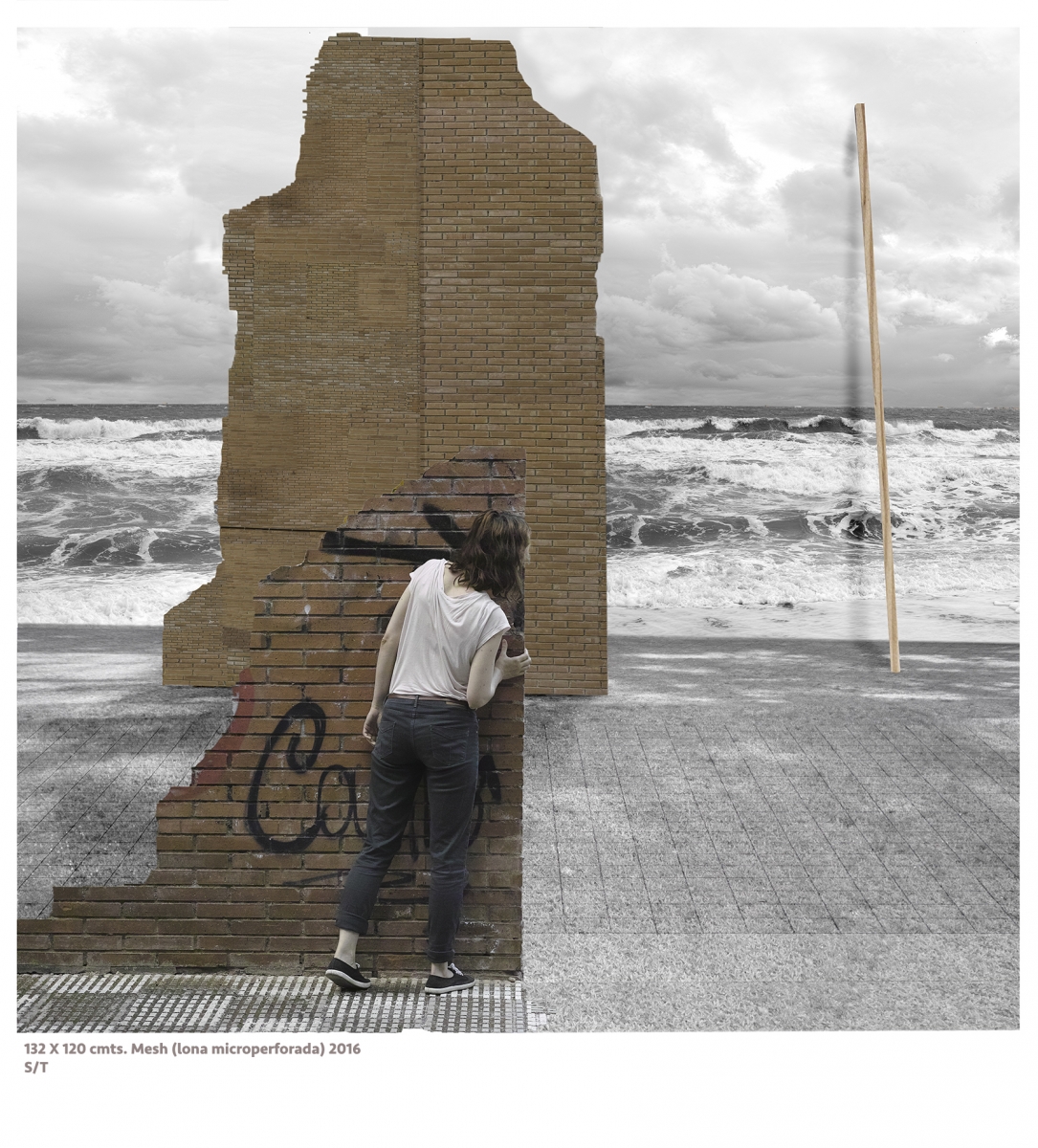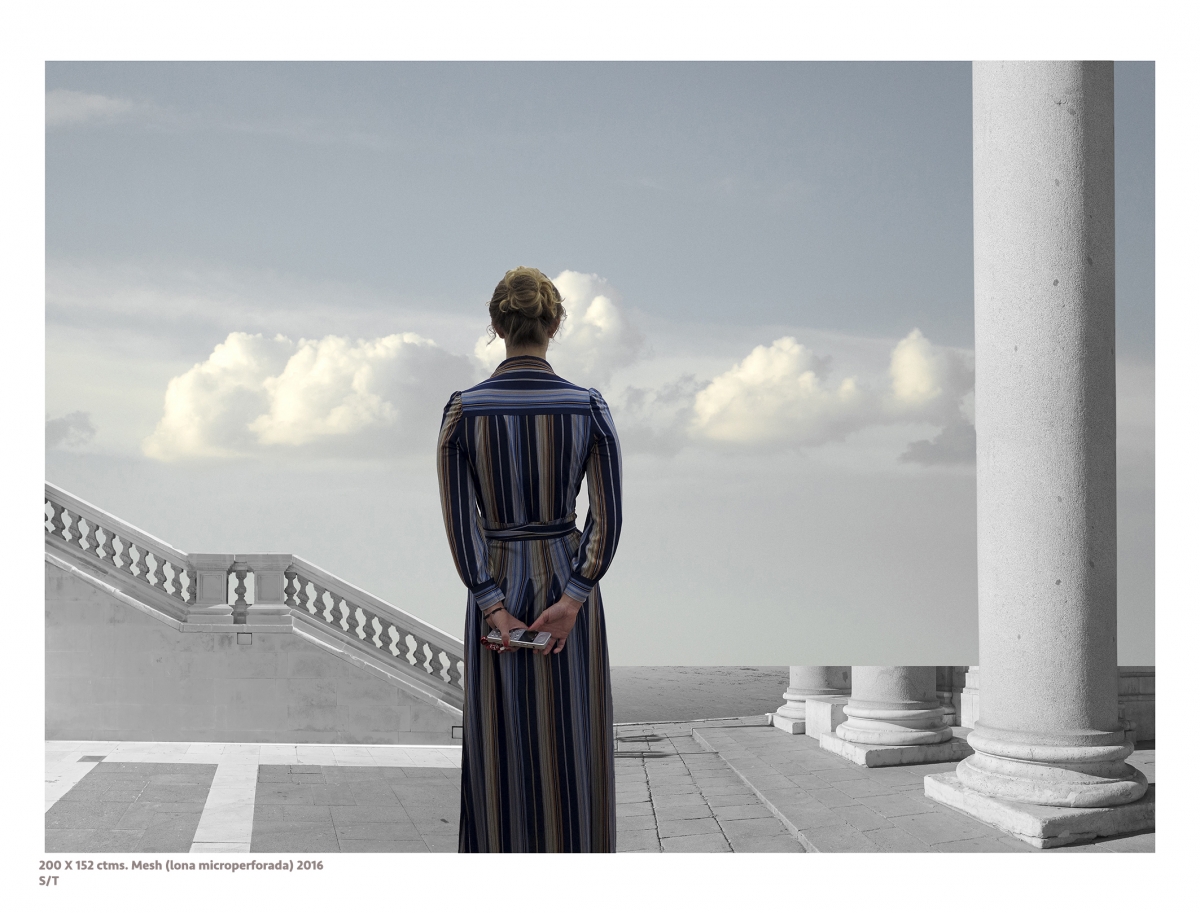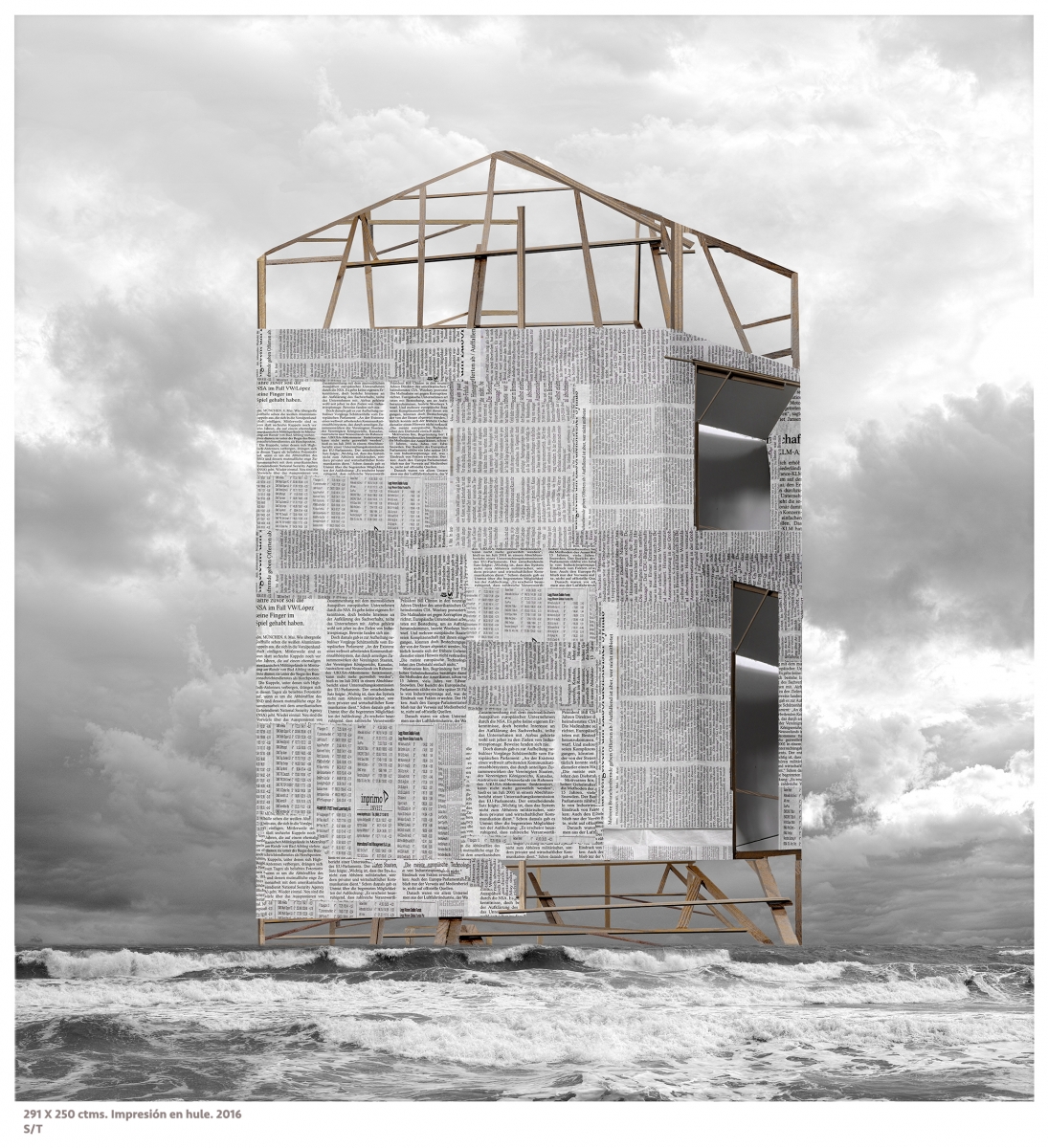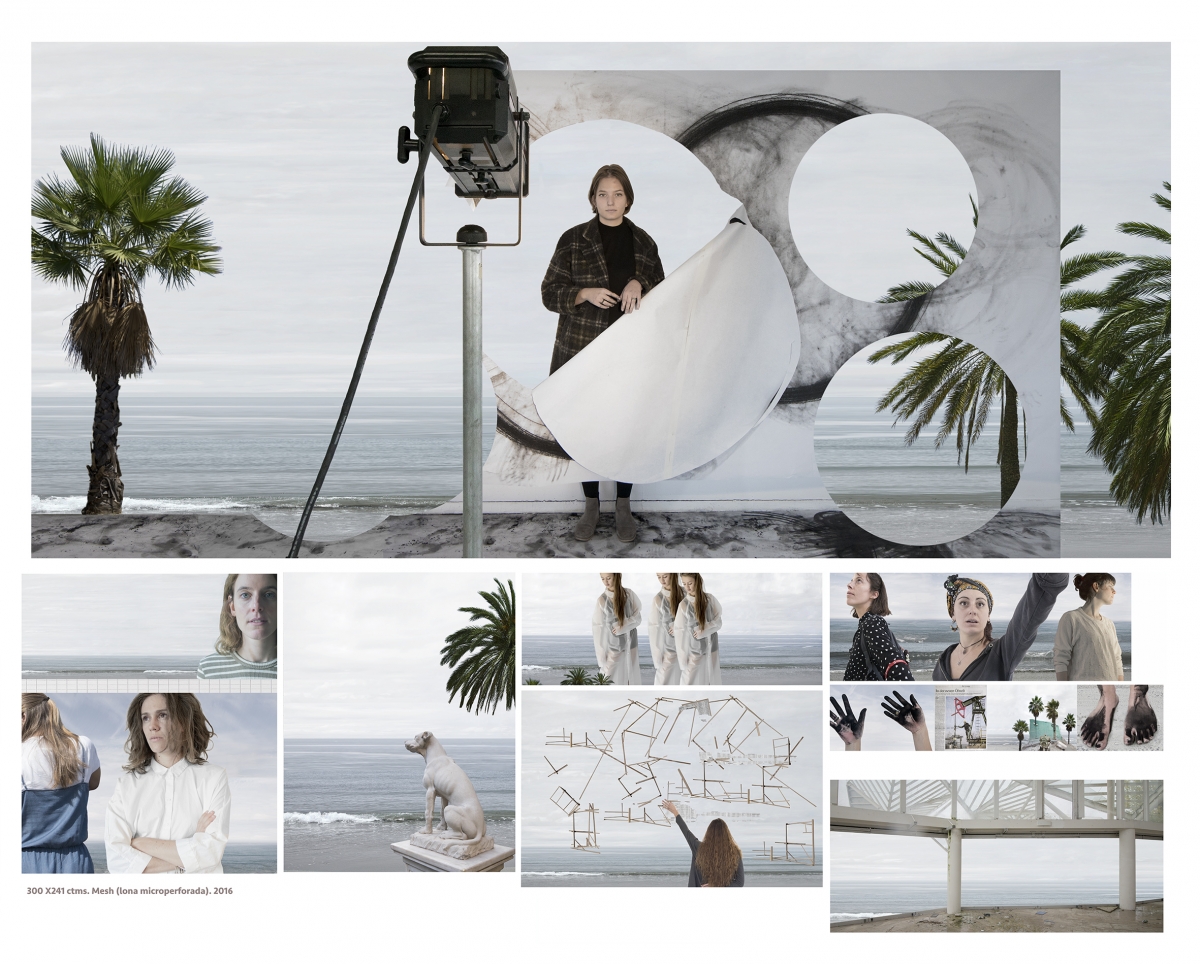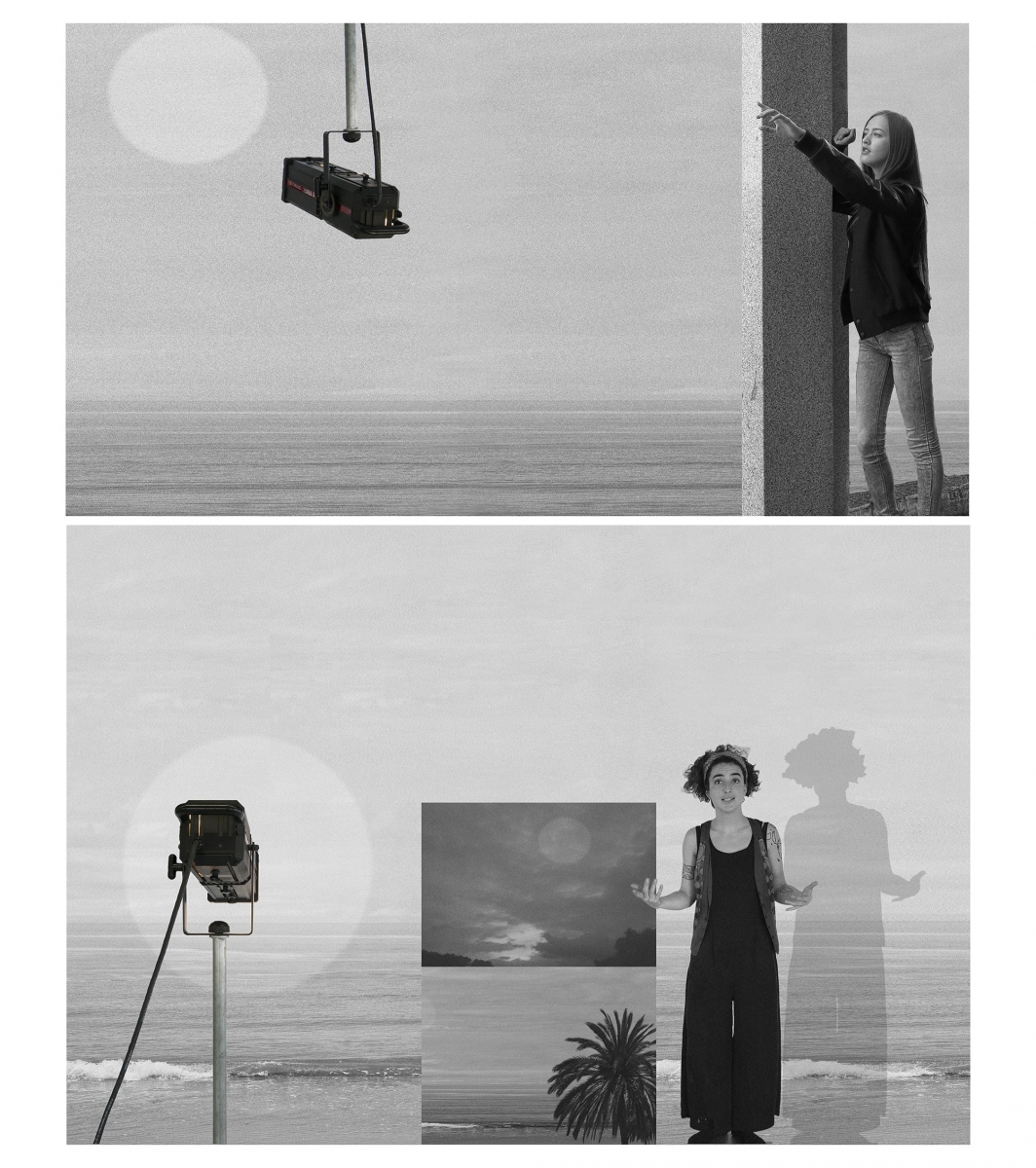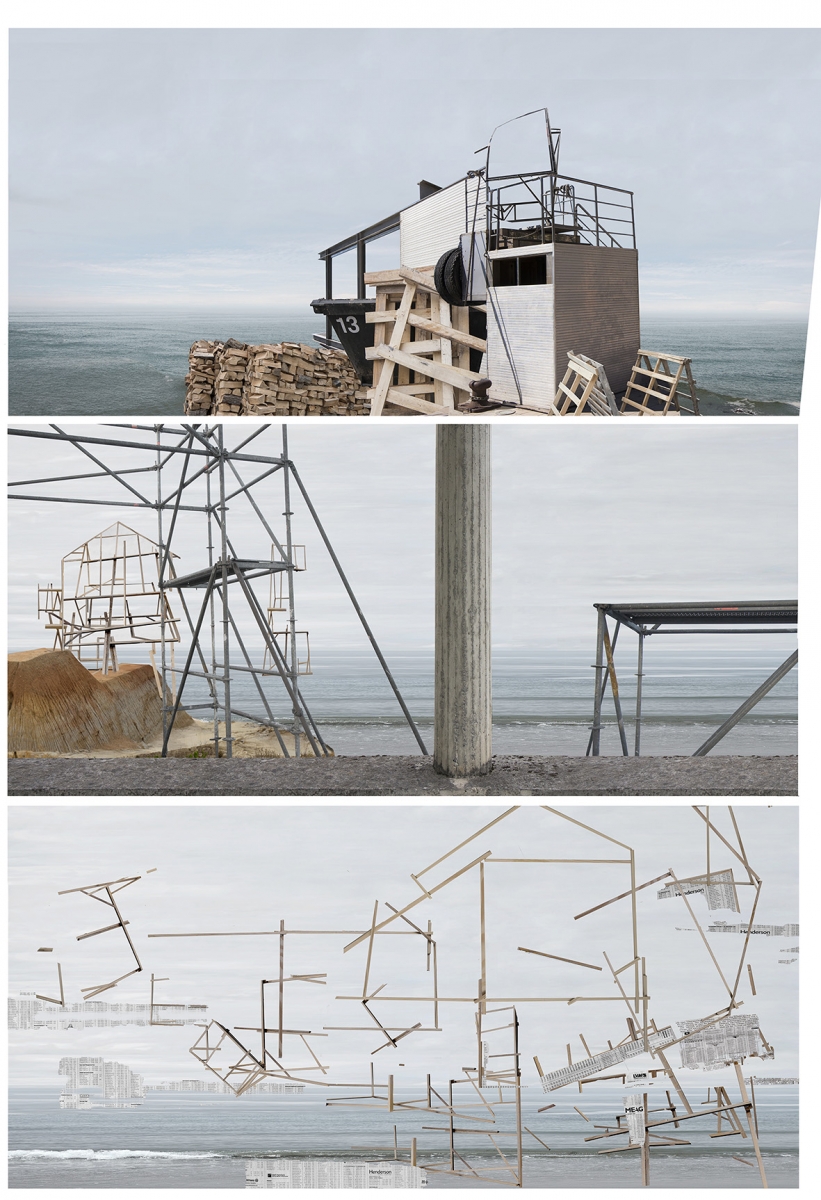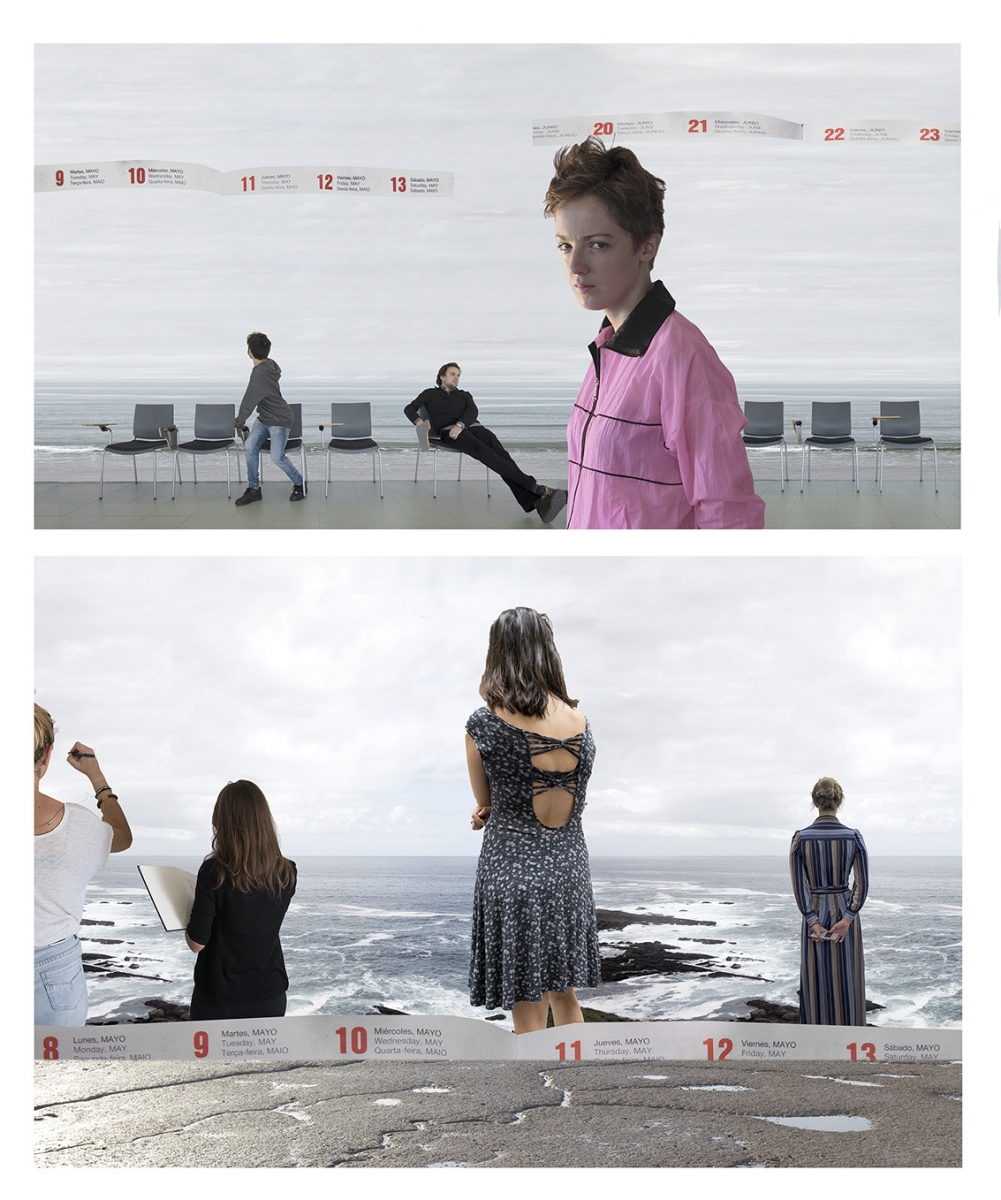Michael Ann Holly
Melancholy betrays the world for the sake of knowledge. But in its tenacious self-absorption it embraces dead objects in its contemplation, in order to redeem them (…) The persistence which is expressed in the intention of mourning is born of its loyalty to the world of things. (Benjamin, 1977, p. 157)
Some thoughts by allusion, quotation, mood, and metaphor on mourning, writing, and the history of art
Writing about visual art, like looking at it, can on occasion console, captivate, and enrapture. The act of trying to put into words, spoken or written, something that never promised the possibility of a translation can at rare moments blur the boundaries between author and work, enveloping the writer in a greater world of mutual understanding.1 Usually language gets in the way. The enchantment that transpires between beholder and work of art has no name because it resists linguistic appropriation. Try as philosophers might, we resignedly call this “feeling” the “aesthetic” and trust that that lone word covers the compelling, unseen, ineffable, mysterious lure of certain objects. Even Bernard Berenson (1950), selfassured connoisseur that he was, recognized that something more was at work in the contemplation of visual objects than empirical knowledge:
In visual art the aesthetic moment is that fleeting instant, so brief as to be almost timeless, when the spectator is at one with the work of art he is looking at (…) He ceases to be his ordinary self, and the picture or building, statue, landscape, or aesthetic actuality is no longer outside himself. The two become one entity; time and space are abolished and the spectator is possessed by one awareness. When he recovers workaday consciousness it is as if he had been initiated into illuminating, formative mysteries. (Milner, 1993, p. 27)2
The experience of visual captivation (when the two become one) is transitory, even ephemeral, however powerful its aftereffects. In “workaday consciousness,” its consolation lingers, and like ruins contemplated across many cultures and several centuries in faraway places, these material objects provoke a sad and romantic yearning for something that has long ago passed away. This sensation is not modern. As long ago as the fourth century, Saint Jerome wrote: “The gods adored by nations are now alone in their niches with the owls and the night-birds. The gilded Capitol languishes in dust and all the temples of Rome are covered with spiders’ webs” (Woodward, 2001, p. 6). At the close of the last century, the late writer W. G. Sebald mused on what troubled Sir Thomas Browne in 1658 as he contemplated a treasure trove of recently uncovered burial urns in Norfolk:
The winter sun shows how soon the light fades from the ash, how soon night enfolds us. Hour upon hour is added to the sum. Time itself grows old. Pyramids, arches and obelisks are melting pillars of snow (…) The heaviest stone that melancholy can throw at a man is to tell him he is at the end of his nature. (Sebald, 1998, pp. 24, 26)
Mourning, melancholy, monuments lost, monuments found. The duty of any serious art historian is to discover their many stories and then turn these explorations, through the act of writing, into an ever-growing corpus of visual knowledge. Nevertheless, what kind of scholar is drawn to what objects and why? What psychic role does the act of writing about works of art fulfill? Writing about art of the past is a magical game, full of illusions. On the surface it suggests that we can hold onto the past —tame it, compel it to conform to a reasonable narrative— and that conviction makes us go on. Surely that is not all there is to it. It does not take much insight to recognize that something else pricks this sober veneer of professional commitment. As Roland Barthes once said, “what I can name cannot really prick me. The incapacity to name is a good symptom of disturbance” (Barthes, 1981, p. 51).3 The “aesthetic moment,” for lack of a better phrase, quietly waits in the background, and when it makes itself felt, it so often hurts. What is it that ails us? or, conversely, sometimes empowers us?
I am going to make a case for bestowing a name on our disciplinary companion: Melancholy. Or perhaps her twin sister, Mourning. Sometimes, despite Freud, it is difficult to tell them apart.4 Other fields of inquiry also deal with “dead” objects, but the history of art invites melancholy to come along in a distinctly concrete way. Unless we are critics of contemporary art, the works of art with which art historians traffic come from worlds long gone, and our duty is to bring these material orphans into our care and breathe new life into them. As Martin Heidegger once said, “World-withdrawal and world-decay can never be undone. The works are no longer the same as they once were. It is they themselves, to be sure, that we encounter there, but they themselves are gone by” (Heidegger, 1971a, p. 41). “The humanities (…) are not faced by the task of arresting what otherwise would slip away,” argued the great art historian Erwin Panofsky in contradistinction to the sciences, “but of enlivening what would otherwise remain dead” (Panofsky, 1955, p. 24). The objectness of the object insists on it. A work of art stands before us, as Heidegger (1971a) would say, in its “thingly character” as it “hangs on the wall like a rifle or a hat” (p. 19); yet all the living, pulsating cords that once upon a time connected it to a live and busy surround have withered away. True enough, William Shakespeare’s original manuscript of Othello, or a recently discovered fragment of the Dead Sea Scrolls, might, if we were allowed to hold it in our hands, weave similar kinds of melancholic spells around us. So, too, with the score of a Bach partita. For the most part, we encounter these orphans only through reproductions, editions, many successive printings, and performances. An original work of art —a Renaissance painting, for example— exists in our own time and space (even in the artificial ambience of a museum), and it beckons us for corporeal response by dint of its own physical presence. “The thematized world of the past,” declares Hans Ulrich Gumbrecht, “is metonymically present in the world of recipients through certain objects” (Gumbrecht, 1992, p. 60)5. By this reckoning, a museum —itself another kind of art historical “writing”— is a place “where the dead, through the care of the living, perpetuate their afterlives (…)” (Harrison, 2003, p. 39).6 The kind of professional care with which we respond as art historians resides comfortably in our essays and books, but whence comes the desire to write about these works in the first place? Surely the melancholic awareness of time gone by, the enforced abandonment of place by these material exiles, “pricks” our professional competence and denies an easy access to the loss that we are struggling to ignore.7
A couple of proleptic remarks: this essay is addressed directly to the scholarly commitment of writing art history and only indirectly to the role of evocative and meaningful historical objects in our memories, archives, and attics. No doubt, the key to the Bastille that lies quietly in the French National Assembly, or a fragment of an inscription from a recently excavated Mayan tomb, or even the love letters that my grandfather wrote to my grandmother in 1918 evince a powerful phenomenological pull all their own. The metonym is the message. Nonetheless, the objects to which I wish principally to allude are those that are represented through the genre of writing acknowledged as the discipline of art history. Works of art almost always come to us already mediated. By crossing the axis of aesthetics (hallowed works) with that of history (time gone by), art historians have confronted, over the past century, the oxymoronic challenge of turning the visual into the verbal. Since the eighteenth century, rightly or wrongly, scholars have ennobled certain objects with the mantle of art, thereby separating the realm of artifacts from visual objects that bear the impress of a special aesthetic status. It is this historically and epistemologically identifiable genre of writing that I wish to explore. And while I may well be employing some of the critical and theoretical commitments of visual and cultural studies, I recognize that these contemporary ways of thinking have decidedly different kinds of objects to call their own. The subject of this essay is writing art history as it has been or, indeed, still is.
As the late Maurice Blanchot has reminded us, writing of any sort pushes the raw phenomenological experience further and further into the background. It is an activity that promises warm solace but delivers cool distance. Writing, even that of “ordinary” scholarship, is a product of dread. “One dies at the thought that anything to which one is attached is lost” (Blanchot, 1981, p. 6). Of course, art historians are a special breed of “suffering” human beings. To paraphrase Panofsky (1962), we children of Saturn are born wise but not necessarily happy (p. 76). Since our discipline’s founding over a century ago, as scholars we have striven for objectivity and critical distance when it comes to our chosen objects. We are historians, after all, and our mandate is to proceed according to certain established principles of investigation. Berenson, for example, would have been thoroughly convinced of that. No doubt, the foundations of our creed may have been shaken by a powerful series of poststructural earthquakes at the end of the last century, but most of us have gone on in the hope of finding some element of certainty or, at least, understanding, in an archive, an attribution, or an analysis. And perhaps that is just as it should be, else historical knowledge would not “progress.” As Georges Didi-Huberman eloquently reminds us, though, sorrow and yearning can emanate from many sources:
Before an image, finally, we have to humbly recognize this fact: that it will probably outlive us, that before it we are the fragile element, the transient element, and that before us it is the element of the future, the element of permanence. The image often has more memory and more future than the being who contemplates it. (Didi-Huberman, 2003, p. 33)
Might we not consider melancholy the central trope of art historical writing, the conceit that underwrites the deep structure of its texts?8. How might melancholy, not as a medieval or Renaissance “humor” but as both a metaphor and an explanatory concept in the twenty-first century, help us as practitioners to acknowledge the elegiac nature of our disciplinary transactions with the past? I take it as axiomatic that all written histories are narratives of desire, full of both latent and manifest needs that exceed the professional mandate to find out what happened and when. Given that the focus of the history of art’s labors is always toward recovering what is lost, one of these primal desires must be labeled melancholic. There is a twist, however, to this easy characterization, as I earlier emphasized. The materiality, the very physicality, of the works of art with which we deal is a challenge to ever seeing the past as over and gone. They exist in the same space as their analysts, yet their sense of time is hardly congruent with ours —of that we are acutely aware. And so, we work incessantly at familiarizing the unfamiliar.9 In the plaintive writing of art history, we have what Giorgio Agamben would call a “loss without a lost object” —an authentic melancholic predicament— in which the object is “both possessed and lost at the same time” (Agamben, 1993, pp. 20-21). As scholars we inhabit a paradox, one that enlivens as much as it paralyzes. Echoing Blanchot, Richard Stamelman declares that “writing is loss as it comes to exist in another form (…)” “Language signifies (…) not the thing but the absence of the thing and so is implicated in the loss” (Stamelman, 1990, pp. 20, 39).10
I want to shine an oblique light on the busy workaday activities of art history, like the kind of black light that illuminates the wondrous world of moths fluttering about on late summer nights. In order to do so, I need, delicately, to think about our collective disciplinary drives in relation to some of the insights of psychoanalysis: the “unconscious” of the history of art. Is there one? What kind of spaces, what kinds of time might it occupy? Is it deep, hidden in the darkest corners of our profession, or is it not about depth at all? Is it something that implicitly resides with visual historians all the time, this melancholic awareness that shadows our activities?11 Is it simply the other face of the Necker cube of this discipline, a different surface of our commitment to writing about incandescent objects —objects, like orphans, who came to us from an unknown past but beseech us for attention and care in the present?12
Frank Ankersmit, a well-respected philosopher of history, has recently written a lengthy book entitled Sublime Historical Experience, in which he makes an earnest plea for “a rehabilitation of the romanticist’s world of moods and feelings as constitutive of how we relate to the past. How we feel about the past,” he testifies, “is no less important than what we know about it” (Ankersmit, 2005, p. 10). Like Thomas Browne (1964) in the seventeenth century, not to mention scores of contemporary thinkers in the wake of postmodernism,13 Ankersmit wishes to gather the fragments of the past, the ruins lying all around us if we care to see them (and we do see them indeed if we are art historians!), into a semblance of meaning. Their meanings, ironically, reside in their perpetual loss of meaning. What Browne (1964) or Robert Burton (1989) or John Milton (1874) in the past called melancholy14, or Raymond Klibansky, Panofsky, and Fritz Saxl later refined to “poetic melancholy” and “Melancholia generosa” (Klibansky, Panofsky & Saxl, 1964),15 Ankersmit (2005) names “the sublimity of historical experience” that originates “from this paradoxical union of the feelings of loss and love, that is, of the combination of pain and pleasure in how we relate to the past” (p. 9).
Melancholy, that “noonday demon,” is a shape-shifter, depending on what historical period it is when “she” makes an appearance.16 The 1911 Encyclopaedia Britannica, heralded by its publisher for being “a cross section of the trunk of the tree of knowledge,” provides a terse definition (on the eve of Sigmund Freud’s composition of his oft-cited essay “On Mourning and Melancholia” of 1915 (Freud, 1966-74f, pp. 249-258). In the Renaissance, for example, in the writing of the Florentine Neoplatonist Marsilio Ficino (1989), melancholy was classified as one of the “humors” (Agamben, 1993, p. 11),17 “originally a condition of the mind or body due to a supposed excess of black bile,” but by the seventeenth century “she” was regarded as possessing both a more complex etiology and a greater range of “symptoms” for “desponding grief.”18 By the nineteenth century, the personification had persuasively braided together seemingly contradictory attributes —neurasthenic suffering and bursts of creative brilliance— (Radden, 2000, pp. 12-13), and thereby served as a coveted standard for the Romantic sensibility.19 For many thinkers, the time elapsed between the fourteenth century and the “end” of modernism in the twentieth represents the era of melancholy,20 a metanarrative “inaugurated by the Renaissance, refined by the Enlightenment, flaunted by Romanticism, fetishized by the Decadents and theorized by Freud” (Schiesari, 1992, p. 3) before its resuscitation in postmodern critical theory.21
Before delving into the complexities of Freudian and postFreudian thought on the subject, we could do no better than heed two formidable philosophers of history, Friedrich Nietzsche and Alois Riegl. These two thinkers, one from the late nineteenth and the other from the early twentieth century —around the same time that the owl of art historical wisdom took wing in German-speaking countries— embody the rueful obsession with history and its baleful effects. Nietzsche begins his ‘The Use and Abuse of History” by asking us to consider the cows in the field:
(…) they know not the meaning of yesterday or today; they graze and ruminate, move or rest, from morning to night, from day to day, taken up with their little loves and hates and the mercy of the moment, feeling neither melancholy nor satiety (…) The beast lives unhistorically; for it “goes into” the present, like a number, without leaving any curious remainder. It cannot dissimulate, it conceals nothing; at every moment it seems what it actually is, and thus can be nothing that is not honest. But man is always resisting the great and continually increasing weight of the past (…) he cannot learn to forget but hangs on the past: however far or fast he runs, that chain runs with him. It is matter for wonder: the moment that is here and gone, that was nothing before and nothing after, returns like a specter to trouble the quiet of a later moment. (Nietzsche, 1957, p. 5)22
Haunted by the past, humans turn to history, living with it, killing each other because of it, erecting monuments to it, even writing it down and interpreting it. The danger is an obvious one, for history gives us the conviction, according to Nietzsche, that we are all “mere epigoni,” latecomers, vitiated voyeurs to the panorama that is the past. If this pervasive cultural situation can be remedied, it is by knowing “the right time to forget as well as the right time to remember, and instinctively see when it is necessary to feel historically, and when unhistorically” (Nietzsche, 1957, p. 8).
One special early art historian attempted just that intellectual feat. Riegl, that Janus-faced Viennese thinker who turned one face toward the great philosophers of the nineteenth century and the other toward the future of the brand-new discipline of art history, wrote a justifiably famed essay early in the twentieth century called “The Modern Cult of Monuments” in which he distinguishes between “historical value” and “age value” in monuments fallen under the art historical gaze. Both are implicated in the nascent commitments of the history of art, yet it is their inability to coexist that provides fodder not only for the battle over the issue of preservation but also for the direction of the new branch of the humanities:
Age-value appreciates the past for itself, while historical value singles out one moment in the developmental continuum of the past and places it before our eyes as if it belonged to the present (…)
An aesthetic axiom of our time based on age-value may be formulated as follows: from man we expect accomplished artifacts as symbols of a necessary process of human production; on the other hand, from nature acting over time, we expect their disintegration as the symbol of an equally necessary passing (…) In the twentieth century we appreciate particularly the purely natural cycle of becoming and passing away (…) The nineteenth century is rightly called the historical one because (…) it relished the search for and study of particulars. (Riegl, 1982, pp. 38, 32, 28)23
The cult of ruins, so prominent in earlier musings on the traces the past has left behind, was weakened in the late nineteenth century and only periodically returned at the beginning of the twentieth century as an antidote to the passion for preservation. “While age-value is based solely on the passage of time, historical value, though it could not exist without recognizing time’s passage, nevertheless wishes to suspend time” (Riegl, 1982, p. 38).24 It was the suppression of the first phenomenological, perhaps aesthetic, reaction to “old things” in favor of the scientific understanding of what they are that won the disciplinary day. Banished, but hardly gone, the “romantic” attitude to the past continued to course, like an underground wave, through the “unconscious” of art history. Janus-faced in this respect as well, the philosopher Riegl certainly was aware of that predicament:
Historical value does not exhaust the interest and influence that artworks from the past arouse in us (…) When we look at an old belfry we must make a (…) distinction between our perception of the localized historical memories it contains and our more general awareness of the passage of time, the belfry’s survival over time, and the visible traces of its age (…) the traces of age strike us as testimony to natural laws inevitably governing all artifacts, (…) [not to mention those that] trigger in the beholder a sense of the life cycle. (Riegl, 1982, pp. 23, 31, 24)
In Hamburg, at about the same time, the scholar Aby Warburg (1999) diagnosed Western society as split between Apollonian and Dionysian commitments, divided between “rational conscious poles” and “inspired-ecstatic” ones that would suddenly erupt, throwing the calm surface of supreme cultural productions into turmoil.25 Obsessed with problems in cultural memory, Warburg, early in the twentieth century, spent a lifetime building a library that would bear out his beliefs, a collection whose passions and commitments continue to intrigue thinkers in the twenty-first. It would be difficult to imagine a scholar of the visual more different in temperament from the connoisseur Berenson with whom we began than the cultural historian Warburg. Nevertheless, in their writings and lectures, both, in very different ways, were motivated by the sorrows of loss about what we do not know, what we cannot understand: the kind of historical attitude satirized with justification by Nietzsche but given psychological understanding with justification by Riegl.
And so we have come back again to an auspicious time, around the year, as Virginia Woolf claimed, when human understanding met its match in a world that denied access to its secrets: “In or about December, 1910, human character changed” (Woolf, 1966, p. 320).26 “If death was still an exotic member of late nineteenth-century thinking,” as Thomas Harrison noted, “by 1910 it had received full citizen’s rights” (Harrison, 1996, pp. 8, 97). Henceforth, in that tortured age, if anything was to be explained by its philosophers and historians, they had to go underground, so to speak, into the nether region of Orpheus and Eurydice, where very different kinds of narratives were at work. In their fascination with ruins, death, and time gone by, the Romantics had gestured toward the existence of melancholy, but its scientific grounding came with the work of Freud. At that historical moment, Viennese Freudianism and the Warburg library in Hamburg27 together embodied a new field of cultural inquiry (Rose, 2001, p. 25). It was not easy, however, for the intelligent proponents of the new “Kunstwissenschaft” to get on with their charge before a major act of renunciation took place. And that’s where Melancholy, who might have been expected to exit the stage of art history as science, makes an entrance into my argument once again. This privileged aspect of Freudian and post-Freudian psychoanalysis, I hope, might help us think about what was and is at stake in the evolution of our discipline.
At the threshold of this brief rehearsal of Freudian theory and British object-relations thought, I want to stress that I am not intent on applying psychoanalysis to art history. It is my intention “to think one thing with another,” as Nietzsche (1957, p. 37) might say. Because these two fields of knowledge developed at the same time, and their evolution along parallel tracks can intimate, if not reveal, possible ways of thinking about shared understandings, it makes sense to consider these cultural discourses in tandem. What might psychoanalytic thinking about melancholy, mourning, and death drives indirectly tell us about reading the corpus of art historical thought that has always run alongside it? As a historiographer of art history, I am interested as much in the discipline’s renunciations, displacements, fantasies, and oblivions as in its intellectual history “proper.” While some scholars have written an art history of psychoanalysis (through its favorite images and archaeological metaphors, for example28), mine is not an essay in the psychoanalysis of art history. Recruiting this body of thought to function as a finely woven scrim through which the writing of art history must pass before it is crisply visible on center stage (perhaps it might be more appropriate for it to travel in the other direction, from clarity to veiled mysteries), I invoke a particular strain of psychoanalysis only to lend me words and concepts that can help to make apparent the sources of the poetry, and perhaps the joys and sorrows, of my own discipline.
Ever since he wrote “On Transience” in 1915, Freud acknowledged that mourning was the crucial conundrum that the therapist must penetrate.
Mourning over the loss of something that we have loved or admired seems so natural to the layman that he regards it as self-evident. But to psychologists mourning is a great riddle, one of those phenomena which cannot themselves be explained but to which other obscurities can be traced back. (Freud, 1966-74f, p. 306)29
Provoked by the devastation of war, that meditation speaks reassuringly of an end to the world’s mourning, the point where “our high opinion of the riches of civilization has lost nothing from our discovery of their fragility” (Freud, 1966-74f, p. 307).30 Although Freud would not hesitate to alter or modify ideas during his long career, “his fundamental interest in the ways the past can cause pain in the present was a stable component of his psycho-analysis” (Roth, 1994, p. 337).31 Not long before his beloved daughter Sophie died in an influenza epidemic, (Gay, 1998, p. 391) he wrote “Mourning and Melancholia” (1915, published in 1917). In that packed and suggestive essay, he is intent on distinguishing two reactions to the loss of the object, either in actuality or in fantasy. “Objecthood,” of course, can be conferred on an actual person who has died, but it also can refer to a phantasmatic thing, an abstraction in the suffering individual: “Mourning is regularly the reaction to the loss of a loved person, or to the loss of some abstraction which has taken the place of one, such as one’s country, liberty, an ideal” (Freud, 1966-74d, p. 243).32 The deep and pervasive sorrow that accompanies the one left behind, according to Freud, is “normal,” natural, nonpathological. The survivor of necessity “works through” the anguish and emerges on the other side (wherever that may be) a changed and sorrowful person, certainly, but not a self-tortured one. On the other hand,
The distinguishing mental features of melancholia are (…) in some way related to an object-loss which is withdrawn from consciousness, in contradistinction to mourning, in which there is nothing about the loss that is unconscious (…) In mourning it is the world which has become poor and empty; in melancholia it is the ego itself. (Freud, 1966-74d, p. 244-247)33
The hurt that “the crushed state of melancholia” inflicts on its victim cannot help but diminish his or her connectedness to the world outside (Freud, 1966-74d, p. 248). Once “the shadow of the object fell upon the ego,” all is lost (Freud, 1966-74d, p. 249). “The person in melancholy is lost to himself or herself; the work of melancholy is to preserve oneself as lost, as not worthy of being found” (Roth, 1994, p. 345). According to Karl Abraham (1927), Freud’s fellow explorer in mapping this uncharted psychic topography, melancholy is an archaic kind of mourning. The melancholic is no longer a romantic figure. Entrapped in narcissistic regression, he or she resists any consolation and inhabits a surround devoid of affect and feeling, other than that of a compulsive desire to “repeat the trauma of loss” (Wheeler, 1995, p. 81). In many ways these two states of grieving echo the demands of the death drive (Thanatos) in struggle with the dynamics of the life instincts (Eros). At the very beginning of consciousness (when one becomes two) a permanent division is inscribed in the psyche, and an eternal yearning is put into play:
One group of instincts [Thanatos] moves forward so as to reach the final aim of life as quickly as possible; but when a particular stage in the advance has been reached, the other group [Eros] jerks back to a certain point to make a fresh start and so prolong the journey. (Freud, 1966-74b, pp. 40-41)
In Freudian theory, “mourning follows a loss that has really occurred,” asserts Agamben (1993) “in melancholia not only is it unclear what object has been lost [self or other], it is uncertain that one can speak of a loss at all” (p. 20). As Freud graphically and disturbingly asserts, “The complex of melancholia behaves like an open wound” (Freud, 1966-74d, p. 253).
Outside the confines of the Freudian vocabulary, “pure forms of either mode of grieving are considered rare.” No doubt it makes sense to speak of a “continuum” or “layering” (Santner, 1990, p. 3) or even a hybrid condition such as “melancholic mourning” (Ramazani, 1994, p. 29) so powerful and pervasive and persistent that the sufferer goes in and out of recognition. The wound continues, always, to bleed.
Freud himself knew this, for in other writings, including his letters, he both tested and softened his “overly rigid distinction between ‘mourning’ and ‘melancholia’ to a matter of emphases within mourning” (Freud, 1966-74d, p. 386).34 That is the place, for the time being, then, to leave Freud, in order to venture tentatively and temporarily into the thicket of post-Freudian refinements on the subject. As Juliet Mitchell declares in the first sentence of her introduction to The Selected Melanie Klein, “Psychoanalysis starts but it does not end with Freud” (Mitchell, 1986, p. 9).
Many are the refinements and challenges that the Freudian doctrine has undergone in its century-long legacy. The theme of melancholy, especially in connection with works of visual art, leads me on this occasion in one direction exclusively: to British object-relations theory and its “origin” in the work of Melanie Klein. The young woman from Vienna, first in analysis with Sandor Ferenczi in Budapest (1912) after the death of her mother, soon fell under the influence of her greatest mentor and analyst, the Freudian Abraham, who urged her to join the psychoanalytic community in Berlin in the early 1920s, after which she immigrated to London in 1926. She accomplished much in England: not only did she practice analysis without any formal analytic or medical certification (not unusual for a woman of her time), but she also adapted Freudian ideas in novel, and often thought-provoking, ways and did not hesitate to publish them. In her personal life, she suffered immensely: her son was killed in a climbing accident in 1934, and her daughter, also an analyst, permanently deserted her. Ultimately, her commitment to understanding the human psyche (especially that of children) as it interacts with objects (toys) led to the founding of the British school of object-relation theorists.35 Klein’s claim that the loss of the past can be compensated for by the presence of meaningful material objects has far-reaching implications for my own argument, both metaphoric and material.36
Six compelling principles, or characteristics, of Kleinian psychology hint at the metaphoric links between the complex of melancholy and the writing of art history that I wish to draw. Figuratively, and sometimes literally, they outline —always by innuendo, for obviously Klein is not talking about art historians’ professional commitments— that the motives behind or before the writing of art history may be ones with which this particular brand of psychoanalysis is clearly resonant.37 (1) The significance of “play”: toys or other objects bridge “the gap between an external object and the inner world,” and in doing so they represent the object of phantasy. “Phantasy emanates from within and imagines what is without” (Klein y Mitchell, 1986, pp. 22-23).38 (2) Space not time: for her, “present and past are one and time is spatial, not historical”; what she “observ[ed], describ[ed], and theoriz[ed] is the very absence of history and historical time” (Klein y Mitchell, 1986, pp. 28-29). (3) Meaning of mourning. grief, imagined or real, over another’s death later in life revives all sorts of infantile fears about inevitably losing the “good mother”: “In normal mourning, as well as in abnormal mourning and in manic-depressive states [Klein’s name for melancholy], the infantile depressive position is reactivated” (Klein y Mitchell, 1986, p. 173). (4) Eros and Thanatos: the death drive that Freud had posited in “Beyond the Pleasure Principle” in 1920 is crucial for Klein as well. According to Julia Kristeva, she describes the death drive as “directly linked to the life drive, and not dissociated from it (…)” and asserts that it “manifests itself only through its relation to an object” (Kristeva, 2001, pp. 84, 29). Klein has noted, “In the deepest layers of the mind there is a response to this instinct in the form of fear of annihilation of life” (Kristeva, 2001, p. 83).39 (5) Fear and hurt: “pining” is Klein’s word of choice for “feelings of sorrow and concern for the loved objects, the fears of losing them and the longing to regain them (…)” “Pining for the lost loved object also implies dependence on it, but dependence of a kind which becomes an incentive to reparation and preservation of the object” (Klein & Mitchell, 1986, pp. 151, 163).40 (6) Writing: the act of reparation, making whole once again, lies in the domain of the creative arts. “Pain, suffering, and reparation are at the foundation of creativity and sublimation” (Kristeva, 2001, p. 80).41 Indeed, writing (and painting) provide routes for “re-creat[ing] the harmony of the inner world and (…) maintain[ing] tolerable relations with the outside” (Kristeva, 2001, p. 188).
It might seem at best presumptuous, or at worst naive, to equate Klein’s “toys” with the objects with which art historians play (nº .1). As far-fetched as this material analogy may be, there is nevertheless something provocative about reading the two practices, art history and psychoanalysis, alongside each other. Klein (1975, pp. 52-53) stressed that “there is no instinctual urge, no anxiety situation, no mental process which does not involve objects, external or internal; in other words, object relations are at the centre of emotional life.” “This insight,” she said, “showed me many phenomena in a new light” (Kristeva, 2001, p. 57).42 Her conviction also, I believe, helps to illuminate the melancholic predisposition that shadows many an art historical writing. Such a fixation on objects, the felicitous semantic hinge that connects works of art to the fixtures of Klein’s fascination, intimates the many ways in which certain works of art might be doing something more for our disciplinary psyche than providing handsome materials for advanced research.
The emotional life of art history is predicated on loss (of time, of context), even though it is refracted through objects, shadows of their former selves, that insistently persist in occupying a strange and lonely contemporary space (no. 2). Fear of losing that which is always already gone (no. 3) leads to a celebration of what remains. Indeed, what other choice is there (no. 4)? The feeling of loss that is our constant companion, try as we might to repress it, is the source of a profound disciplinary yearning, a need —because of time’s incessant disappearance— that can never be satisfied (no. 5). And so we write (no. 6), but writing never satisfies, for every word only widens the phenomenological divide between our objects and ourselves. In this regard, art history, an inquiry that originates with actual objects of aesthetic fascination, could be viewed as the “modernist literary discourse” par excellence of the sort that Esther Sanchez-Pardo —although she never directly mentions the discipline— invokes in a recent book on Klein and the malady of modernity:
Modernist literary discourses are haunted by the specter of object loss: loss of a coherent and autonomous self, loss of a social order in which stability reigned, loss of metaphysical guarantees, and in some cases loss and fragmentation of an empire (…) Modernist literary and visual texts strive on many levels to deny the contemporaneous sense of loss, to hide its sadness, to mark and disavow its absence, to vent and contain rage, and to doubt any project of reparation (…) Where is the labor of melancholia to be closed and how can we begin the work of mourning?… To what extent is this melancholic labor telling us of a deeper melancholia that may have to do with reading and writing as entombments, as memorials to all the cultural and emotional losses of our pasts? (Sánchez-Pardo, 2003, pp. 18, 272)43
Weary words. I would hope that there might be a contrary way of construing this predicament so that we can think differently, even unconventionally, about the passions and commitments of writing art history. Two object-relations analysts, D. W. Winnicott from the middle of the last century and Christopher Bollas, who practices and writes in England today, might help. What makes their object-relations studies suggestive for contemplative art historians is their mutual dedication to the Kleinian notion of reparation and its therapeutic goal of restoring a certain vitality to the state of melancholy.
In the work of Klein’s “blithe and unbeglamoured” (Phillips, 1988, p. 13) colleague D. W. Winnicott (1896-1977), the first pediatrician in England to undergo training in psychoanalysis, emphasis was placed on living rather than suffering (Phillips, 1988, p. 6). Analyzed no less both by James Strachey (editor of Freud: The Standard Edition) and Joan Riviere, Winnicott (1971) adopted Klein’s faith in the diagnostic potential of playing phantasy games with children.44 His focus was on the social interaction between mother and child (the “holding environment”), rather than with the infant’s developing sense of aloneness (Winnicott, 1965, pp. 29-36).45 His principal break with Klein resided, in fact, over the conception of the mother as agent (who always needs to be just “good enough”) (Doane y Hodges, 1992, p. 20).46 In Winnicott’s universe (1968) there is no anger, no single-minded drive to destruction (“I have never been in love with the death instinct,” he claimed (Winnicott, Shepherd y Davis, 1989, p. 242). The demise of the infant’s “objects,” primarily the mother (both “good breast” and “bad breast’’), may be desired, but there is inevitably “joy at the object’s survival” (Winnicott, Shepherd y Davis, 1989, p. 226).47 Constancy is the reward, and objects and their “transitional substitutes” (Winnicott, 1958) (for example, baby’s blanket)48 that pass unscathed through this psychic valley of death can then be manipulated to the infant’s (and later the adult’s) own ends. He or she grows up half happy in a world of using or making “objects.” If blessed, he or she may make art, or even write about it. Artistic sublimation, for Winnicott, is the process by which inner states become actualized in external form: art is “that bit of the external world which takes the form of the inner conception. In painting, writing, music, etc., an individual may find islands of peace” (Winnicott, 1989b, p. 391).49 Writing about works of art, by extension, becomes a medium not only for invoking their past but also for finding deep consolation for the self in visual forms in the present.50 It is an exchange animated by mutual recognition. Winnicott implies, as have so many others (including Kristeva, who hails from another tradition of psychoanalysis altogether), that art is the supreme embodiment of the imagination, for it “enables a sublimation of the excruciating pain caused by separation from the lost object” (Doane y Hodges, 1992, p. 68).51
Objects lost, objects found. Always they return us to the mysteries of writing art history: an art in its own right, very similar in many unconscious respects, to the making of art, literary or visual. Where artists embody, art historians tend to deny. Needing our historical accounts to function as models of sound empiricist knowledge, we often forget that it is the desire to understand ourselves and our need to create these consoling stories that might also be at work in this special, sustained form of sublimated melancholy. The work of Bollas, then, might have the most direct implications for those of us interested in the meanings and motives, as well as the consolations, of our chosen profession.
In his 1987 book The Shadow of the Object: Psychoanalysis of the Unthought Known, Bollas is most interested in “that part of the psyche that lives in the wordless world” (Bollas, 1987, p. 3),52 and he illustrates this place of stillness by works of art and the spells with which they enchant their beholders. “When a person feels uncannily embraced by an object” (shades of Winnicott’s “holding environment” that a “good enough” mother provides for her infant) (Bollas, 1987, p. 4), it has much to do with the work of art’s ability to reenact a much earlier, preverbal, memory. Echoing Berenson’s words with which we began, this is the aesthetic moment of profound rapport (when two become one) with a work that gives the viewer (art historian, aesthetician, critic, or other) the sense “of being reminded of something never cognitively apprehended but existentially known” (Bollas, 1987, p. 16). This experience —reminiscent of Klein’s rupturing chronological or historical time in favor of the simultaneity of shared space—has been described (by Bollas) as “crystalliz[ing] time into a space where subjects and objects appear to achieve an intimate rendezvous (…) [inside of this] fundamentally wordless occasion” (Bollas, 1987, p. 31). In a study almost a decade later, he extends this evocative analogy (or is it an allegory?) to the past (a “cemeterial” concept) and to history writing:
By making past events meaningful, the historian exercises an important psychic capacity, that of reflection: this does not confer retrospective truth on the past —indeed, almost the contrary— but creates a new meaning that did not exist before, one that could not exist were it not based on past events and did it not transform them into a tapestry holding them in a new place. That new place —in history proper the text of the historian (…) is a psychic act (…) Unlike the past, which as a signifier sits in the self [or perhaps on the shelf?] as a kind of lead weight, history requires work, and when the work is done the history is sufficiently polysemous to energize many unconscious elaborations (…) [The historical text] saturates [its many details] with new meaning created through the very act of retrieval. (Bollas, 1995, pp. 134, 143-145)
If done well, the writing of history summons its own aesthetic power, heeds the call of redemption that Benjamin followed (Benjamín, 1968b). But what of art history? What exactly is lost in its own special dominion of the dead? The past, but not the objects from the past. It would be easy if they were one and the same, but they so clearly are not. Most of us, both experts and laypersons, know that the past is irrecoverable, but what do we do with relics and material orphans “so vivid, so tantalizingly concrete, that we cannot help but feel deprived” in their presence? (Lowenthal, 1985, p. 33). This is the distinctive dilemma of the history of art from which we cannot escape, and melancholy is the key that locks us in. Can it really be the case, as Heidegger presciently remarked, that “experience is the element in which art dies [but] (…) the dying occurs so slowly it takes a couple of centuries”? (Heidegger, 1971b, p. 79).
For reparation’s sake, I want lightly to maintain, on the other hand, the Freudian distinction between melancholy and mourning when it comes to writing art history and emphasize that, inside our intellectual prison, melancholy can be as intellectually empowering as it is psychologically debilitating, a sentiment closer to that of the Romantics, I suppose, than today’s popular psychology could ever acknowledge.53 The trouble with mourning is that it is an “act of riddance which expels memory and displaces it with a here-and-now consciousness” (Bollas, 1995, p. 117). In a consoling letter to a sorrowing friend, even Freud (1961) blurred the distinction between what he called pathological and nonpathological anguish (over a person or an abstraction or even an object):
Although we know that after such a loss the acute mourning will subside, we also know we shall remain inconsolable and will never find a substitute. No matter what may fill the gap, even if it be filled completely, it nevertheless remains something else. And actually this is how it should be. It is the only way of perpetuating that love which we do not want to relinquish. (Winnicott, 1989b, p. 477)54
Were it not for the open wound, still bleeding, there would be nothing to try and say, no commitment either to the dead or the living. No history of art, no history of aesthetics, no museums. Melancholy holds us there, and in the act of aesthetic yearning, we strive to keep the works of art alive, even with the awareness that their historical being vanishes deeper into the past with every passing day. “Loss,” Stamelman insightfully once characterized, is the “precondition of interpretation. But much writing represses that truth, and the will of much interpretation is a will to forget loss” (Stamelman, 1990, p. 31). Historians could conceivably soften their willfulness by heeding the orphic voice of poets. “Sad, strange, but also sweet is the emotion” cultivated by those writers. “Loss is celebrated as much as it is mourned,” according to the critic Peter Schwenger.” Thus melancholy is often the very thing (or Thing) that poets strive to impart to their readers” (Schwenger, 2006, p. 13). Sublime awareness is what Ankersmit (2005) dubbed it, this powerful paradoxical union of pain and pleasure released by history writing. In urging us to “feel” rather than just “know,” he urges us to return to the Romanticists’ world of moods and passions: “let us restore to our thinking about history and about historical writing (…)something of the human heart and of what has a resonance in the depths of our souls” (pp. 9-11).55 Indeed, what else can we do? Whitney Davis, writing on Johann Joachim Winckelmann, offers one alternative:
The history of art is lost, but art history is still with us; and although art history often attempts to bring the object back to life, finally it is our means of laying it to rest, of putting it in its history and taking it out of our own, where we have witnessed its departure. To have the history of art as history —acknowledging the irreparable loss of the objects— we must give up art history as a bringing-to-life, as denial of departure. If it is not to be pathological, art history must take its leave of its objects, for they have already departed anyway. (Davis, 1998, p. 50)
Despite the eloquence of Davis’s words, in this essay I have been imagining a different route. Art historians in their empiricist inclinations may strive to make the objects return to the past from whence they came by replacing them “in historical context,” by putting them in their own history and taking them out of our own. Yet that is not where the art of art history comes from, and as philosophers, or poets, we feel that tug acutely. There is no “end” to art history. We simply cannot let these lonely works of art disappear: if this is “pathological” so be it; if it is symptomatic of melancholy rather than mourning, it is nevertheless the only “romantic,” reparative act in which caretakers can engage, thereby “soothing the sadness of our condition,” as Georg Wilhelm Friedrich Hegel (1993, p. 5) puts it. Still art still matters, and works of art, in their hushed material presence, insistently press us not to let time swallow them up again.
In sum, the melancholy that courses through the history of art is a product of its perhaps unconscious awareness that works that seem so present are actually absent. It is the loss embedded in this ambiguity that both haunts and animates its activities. Rather than consign them to history, the art historian tries to repair the damage by ascribing new meanings in the present. In the face of their apparent “meaninglessness,” as survivors of a storm that has deprived them of their authenticity, our writing attempts what cannot actually be done —to restore to them that quality that they have nearly, but not quite, lost. In the midst of this compromised act of recovery, though, art historians find something of themselves, or at least cultivate the exquisite sensitivity toward age value that Riegl once extolled.
In this closing cascade of quotations, there is one concluding voice from whom we must hear, the same melancholic with whose words we began: Walter Benjamin. Reading Marcel Proust’s reveries hazily circling round the most privileged object from his past —his grandmother’s madeleine— Benjamin himself meditates on the impossibilities of any authentic recovery:
In vain we try to conjure [our own past] up again; the efforts of our intellect are futile. Therefore Proust, summing up, says that the past is somewhere beyond the reach of the intellect, and unmistakably present in some material object (or in the sensation which such an object arouses in us), though we have no idea which one it is. As for that object, it depends entirely on chance whether we come upon it before we die or whether we never encounter it. (Benjamín, 1968a, p. 158)56
Art historians, of course, deliberately select which objects to “save” —or else find the objects that we hope will “save” us. In doing so, we heighten sensitivity to worlds gone by as much as we quiet our incessant yearnings by presuming we can re-create or “understand.” My excursions into object-relations theory provided me with the psychoanalytic concepts and prose employed throughout the last century —the same century in which the historical study of art became a legitimately acknowledged discipline— that have attempted to come to grips with the strange aesthetic power relics from the past can exert over us. It is the poetry of longing, the knowledge that we will never understand, that lubricates the black bile of melancholy and alchemically changes it into the darkest of ink, as Charles Baudelaire once evocatively remarked.57 Writing about art, works of art that are present, but whose world is long gone, presents more challenges than a research protocol devoid of poetry can ever acknowledge. These beautiful orphans, in other words, animate our writing, on the one hand, because they “live”58, and, on the other, because they are long “dead.” It is melancholy that affords us a disciplinary soul.
—
My title, “The Melancholy Art,” has distant resonances with Rose, G. (1978). The melancholy science: An introduction to the thought of Theodor W. Adorno. New York: Columbia University Press., a phrase she takes from the first words of Adorno’s Minima Moralia (1944-47) that in turn echoes Friedrich Nietzsche’s The Gay Science (1886). Adorno’s work desired to show “how ‘the melancholy science’ is precisely an attempt to redefine the relation between theory and praxis” by “offering critical theory as an alternative to positivism in sociology” (p. 143).
1. Tantamount to Sigmund Freud’s “oceanic feeling”: “A sense of ‘eternity,’ a feeling as of something limitless, unbounded —as it were ‘oceanic’”? (Freud, 1966-74c, pp. 64-65).
2. (Berenson, 1950), quoted in (Milner, 1952), reprinted as “The Role of Illusion in Symbol Formation” (Milner, 1993, p. 27).
3. “Old photographs always bring melancholy along for the ride. In a way, perhaps, that paintings do not?” (Barthes, 1981, p. 51)
4. More on the individual character traits of these two phantoms shortly. And then there’s the third sister: Nostalgia. The reason that she does not compete in the naming contest is, according to Svetlana Boym’s recent book, because she signifies something more than “individual psychology”: “Unlike melancholia, which confines itself to the planes of individual consciousness, nostalgia is about the relationship between individual biography and the biography of groups or nations, between personal and collective memory” (Boym, 2001, pp. xv-xvi). See also (Lepenies, 1992); and (Stewart, 1993). “The souvenir may be seen as emblematic of the nostalgia that all narrative reveals —the longing for a place of origin” (Stewart, 1993, p. xii).
5. His example is Jules Michelet’s recounting the story of the old key to the Bastille, so dense with stored meaning, that lies in an iron cabinet in the archives of the French National Assembly.
6. Indeed, these temples of art today might well “play the role of the mnemonists’ memory palaces in highlighting the conceptual design of the remembered past” (Hutton, 1993, p. 10).
7. The theme of loss and mourning is very pronounced in a certain poststructuralist French tradition: in addition to Barthes, see, (Lacan, 1978), originally published as Les quatres concepts fondamentaux de la Psychanalyse, bk. 11 of Le séminaire de Jacques Lacan (Lacan, 1973); (Lacan, 1977), originally published as Écrits (Paris: Edition du Seuil, 1966); and (Lacan, 1992) originally published as L’éthique de la psychanalyse, Le séminaire VII (Lacan, 1973, pp. 129-30): The “Thing” “will always be represented by emptiness, precisely because it cannot be represented by anything else —or, more exactly, because it can only be represented by something else. But in every form of sublimation emptiness is determinative (…) All art is characterized by a certain mode of organization around this emptiness.” This realization of “the lack that initiates desire,” according to Peter Schwenger, “then, also initiates a certain melancholy” (Schwenger, 2006, pp. 32-33). See also (Kristeva, 1989). By Jacques Derrida, see (1982, pp. 309-330), (1974), (1995) and (2001). The last two editors also suggest (Krell, 2000). “To keep alive, within oneself: is this the best sign of fidelity?” asked Derrida (2001, p. 9) in his eulogy to Roland Barthes, in The Work of Mourning.
8. The concept of the “trope” and its power I take from Hayden White in Tropics of Discourse: Essays in Cultural Criticism “Understanding, is a process of rendering the unfamiliar, or the ‘uncanny’ in Freud’s sense of that term, familiar (…) This process of understanding can only be tropological in nature, for what is involved in the rendering of the unfamiliar into the familiar is a troping that is generally figurative” (White, 1978, p. 5). Henry James once claimed that “we are divided of course between liking to feel the past strange and liking to feel it familiar; the difficulty is, for intensity, to catch it at the moment when the scales of the balance hang with the right evenness.” James, introduction (1888) en (James, 1986, pp. 31-32). And so works of art fulfill James’s definition of the appeal of objects from the past only two-thirds of the way: “the poetry of the thing outlived and lost and gone” (Íbid.).
9. Art history developed as a discipline, Charles Merewether has argued, “that looked upon art as the shimmering ‘afterlife’ (Nachleben) of the past. Seen within the present, art represents the survival and transmission of the past, carrying with it traces of another place, time and culture. Art history becomes a trail leading us back to that inaugural moment in which the object comes into existence, itself a form of trace constituted in its separation from the artist and from the culture in which it originates.” (Merewether, 1999). For a fascinating study of disjointed and anachronistic time in Renaissance art (and beyond), see (Nagel & Wood, 2005, pp. 403-413).
10. For three other literary ruminations on melancholy, see (Sacks, 1985); (Ferguson, 1995); and (Chambers, 1993).
11. “Something of the past always remains,” according to the philosopher of history Dominick LaCapra, “if only as a haunting presence or revenant” (LaCapra, 1999, p. 700).
12. With the intention of eventually producing a book, along the way I have written several “case studies” on the connections among melancholy, art history, and writing: (Holly, 2002b, pp. 660-669), reprinted in (Holly, 2003, pp. 156-178); (Holly, 2007); (Holly, 2002a); (Holly, 1998a, pp. 467-478); (Holly, 1998b).
13. Among contemporary thinkers in the visual arts, for example, are Eric L. Santner (1990); Yve-Alain Bois (1986, pp. 29-49); Douglas Crimp (2002); T. J. Clark (1999); and Hans Belting (1987). All allude to what Wendy Wheeler calls “the postmodern nostalgia (a form of melancholia),” in (Wheeler, 1995, p. 77). See also (Starobinski, 1966, pp. 81-103).
14. Robert Burton, The Anatomy of Melancholy, “I write of Melancholy, by being busie to avoid Melancholy” (Burton, 1989, p. 6); and John Milton in Il Penseroso ‘’These pleasures, Melancholy, give; / And I with thee will choose to live.” (Milton, 1874, p. 290).
15. “There are echoes of another world, a world of neither prophetic ecstasy nor brooding meditation, but of heightened sensibility where soft notes, sweet perfumes, dreams and landscapes mingle with darkness, solitude and even grief itself, and by this bitter-sweet contradiction serve to heighten self-awareness.” A passage on Milton quoted from the most masterful historical and pictorial treatment of the subject by far: (Klibansky, Panofsky, & Saxl, 1964, p. 230). And all art historians acknowledge Rudolf Wittkower and Margot Wittkower (Wittkower & Wittkower, 1963).
16. Melancholy’s gender does not seem to be in question, especially when it comes to her many visual depictions throughout the ages. Melancholia is female; a melancholic can be of either sex. For pictorial proof, see the wonderful exhibition catalog composed by the Musée du Louvre, París, Mélancolie: Génie et folie en Occident (Claire, 2005). I thank Olivier Meslay for sending me an early copy and alerting me to the surprising statistic that the Louvre had three times as many visitors to this exhibition than anticipated. Thomas Gaehtgens sent me the catalog Melancholie: Genie und Wahnsinn in der Kunst (Clair, 2006), for the similar exhibition in Germany. I am grateful to both for thinking of my interest in the topic.
17. “Melancholy or black bile (melaina chole) is the humour whose disorders are liable to produce the most destructive consequences. In medieval humoral cosmology, melancholy is traditionally associated with the earth, autumn (or winter), the dry element, cold, the north wind, the color black, old age (or maturity); its planet is Saturn, among whose children the melancholic finds himself with the hanged man, the cripple, the peasant, the gambler, the monk, and the swineherd” (Agamben, 1993, p. 11). For further elaboration, see (Klibansky, Panofsky & Saxl, 1964), passim.
18. The Encyclopaedia Britannica, 11th ed., often called the “last great encyclopedia” before the political and social changes wrought by World War I and the immense technological changes of the new century made the idea of encapsulating all the world’s knowledge obsolete. (The Encyclopaedia Britannica, 1911, p. 88).
19. This is not to say that many earlier thinkers in the tradition of Aristotle did not see inspiration in melancholy as well. According to Frances Yates, at that time “the temperament of reminiscence is not the ordinary dry-cold melancholy which gives good memory; it is the dry-hot melancholy, the intellectual, the inspired melancholy” (Yates, 1992, p. 80).
20. Agamben in Stanzas, says, “Bringing up to date the list of melancholics listed by Aristotle in his problem xxx [Hercules, Bellerophon, Heraclitus, Democritus, Maracus] would risk excessive length. After its first reappearance among the love poets of the duecento, the great return of melancholy began with humanism. Among artists, the cases of Michelangelo, Dürer, and Pontormo are exemplary. A second epidemic struck in Elizabethan England; the case of John Donne is a good example. The third epoch of melancholy was the nineteenth century: among the victims were Baudelaire, Nerval, De Quincey, Coleridge, Strindberg, and Huysmans. During all three periods, melancholy was interpreted with daring polarization as something at once positive and negative” (Agamben, 1993, p. 14).
21. See also (Doane & Hodges, 1992); (Butler, 1990); and (Kristeva, 1980).
22. (Nietzsche, 1957, p. 5), first emphasis mine; originally published in Unzeitgemässe Betrachtungen (Nietzsche, 1873-76), translated as Thoughts out of Season.
23. “Der moderne Denkmalkultus, sein Wesen und seine Entstehung” was first published as a legal coda about preservation in 1903. It was republished in Riegl’s collected essays, Gesammelte Aufsätze (Swoboda, 1929, pp. 144-193). See (Nelson & Olin, 2003, p. 9).
24. (Riegl, 1982, p. 38). Cf. this passage from Panofsky, “History of Art as a Humanistic Discipline: Instead of dealing with temporal phenomena, and causing time to stop, [the humanities] penetrate into a region where time has stopped of its own accord, and try to reactivate it” (Panofsky, 1955, p. 24).
25. See (Agamben, 1993, p. xvii); (Warburg & Forster, 1999); as well as Nagel & Wood (2005b) and attendant responses by Charles Dempsey, Michael Cole, and Claire Farago, (Nagel & Wood, 2005b, pp. 416-429). See also (Holly, 1993), idem, (Holly, 2000), retrieved from http:/ /www.caareviews.org/; and idem (Holly, 2002a).
26. Thanks to Janet Wolff for this reference.
27. For the classic essay on the relation between art history and psychoanalysis, see (Ginzburg, 1980, pp. 5-36).
28. (Pollock, 2006), esp. Mieke Bal’s essay, (Bal, 2006, pp. 30-59); (Rose, 1986); and (Gamwell & Wells, 1989), esp. Donald Kuspit’s essay, “A Mighty Metaphor: The Analogy of Archaeology and Psychoanalysis” (Kuspit, 1989, pp. 133-153).
29. See also idem, “A Disturbance of Memory on the Acropolis (1936)” (Freud, 1966-74a, pp. 239-248); as well as (Rickels, 1988, p. 2).
30. A recent book by Matthew von Unwerth, Freud’s Requiem: Mourning, Memory, and the Invisible History of a Summer Walk (Unwerth, 2005), is a fictional re-creation of the feelings of loss, fragility, and recovery discussed among three friends on a walk in the Dolomites. Unwerth speculates that Freud’s two companions, whom Freud does not identify in “On Transience” except to say one was a “taciturn friend” and the other “a young but already famous poet,” were Lou Andreas-Salomé and Rainer Maria Rilke.
31. See also (Lear, 2005, pp. 167-172); and (Rickels, 1988).
32. (Freud, 1966-74d, p. 243), emphasis mine.
33. Ibid. (Freud, 1966-74d, p. 244-247), emphasis mine.
34. See Freud’s response, quoted to the mourning of Warburg’s psychiatrist, Ludwig Binswanger, in (Freud, 1960, p. 386).
35. For biographical details, see (Grosskurth, 1986).
36. J. Laplanche and J.-B. Pontalis, The Language of Psycho-Analysis (Laplanche & Pontalis, 1973, p. 273), stress that the word “object” does not connote, as it does in ordinary parlance, a “thing, of an inanimate and manipulable object,” but the word is certainly suggestive from my point of view. I appreciate being invited to read this essay at the Austen Riggs Center in Stockbridge, Mass., on November 30, 2006. The discussion with the center’s analysts and therapists about object-relations theory was most helpful.
37. Klein’s views on the relations between mourning, aggression, and guilt considerably complicate the Freudian perspective (not to say my own), but I am clinging to the metaphoric resonance of these ideas for art history rather than underscoring their immense power for clinical diagnostics. Nonetheless, according to Judith Butler, “For Klein, the object that is lost is ‘introjected,’ where ‘introjection’ implies an interiorization of the object as a psychic object (…) For Freud, the act of ‘internalization’ by which the lost other (object or ideal) is rendered as a feature of the psyche is that which also ‘preserves’ the object” (Butler, 1998, p. 181). See also (Butler, 1997).
38. The “ph” spelling is used to indicate the unconscious process.
39. Julia Kristeva (Kristeva, 2001, p. 83), quoting (Klein & Riviere,1952). For the elaboration of the death instinct, see (Freud, 1966-74b).
40. See Eli Zaretsky, Secrets of the Soul: A Social and Cultural History of Psychoanalysis “Based on the recognition that the mother is separate, it constitutes the beginning of subjectivity. Since, in Klein’s conception, subjectivity involved object loss, mourning, and sadness, she also called this the ‘pining position’” (…) (Zaretsky, 2004, p. 257).
41. Klein herself, “Infantile Anxiety Situations,” in (Klein & Mitchell, 1986) “In the analyses of children, when the representation of destructive wishes is succeeded by an expression of reactive tendencies, we constantly find that drawing and painting are used as means to make people anew” (p. 93).
42. Klein (1975, pp. 52-53), quoted in (Kristeva, 2001, p. 57) (first half of first quotation emphasis mine). It has to be acknowledged that Klein very often speaks of external objects as also mirroring imagined internal ones.
43. For two recent, provocatively theoretical texts on loss, see (Butler, 2003); and (Horowitz, 2001) who says of his book (5) that it is the story of “the moments when aesthetic theory most powerfully sustains the loss of the power of transcendence. To come after—as philosophical history always does —when coming after no longer means redeeming what has been left behind, is to suffer a failure of history. Sustaining this suffering, having no faith in history, is the motivating background of this book” (p. 5).
44. This text, published in the year of his death, is an extension of work begun twenty years before. For an intellectual biography, see (Rodman, 2003).
45. D. W. Winnicott, “The Capacity to Be Alone” (1958), a capacity that first depended on being alone in the mother’s presence (Winnicott, 1965, pp. 29-36).
46. It is Winnicott’s focus on the exclusive responsibility of the 1950s “good-enough” mother who creates a good home (or not) that came under scrutiny by later feminists (Doan & Hodge, 1992, p. 20).
47. As Clare Winnicott, D. W.’s wife and editor, has remarked (3): “For him, the destroying of the object in unconscious fantasy is like a cleansing process, which facilitates again and again the discovery of the object anew. It is a process of purification and renewal” (Winnicott, Shepherd & Davis, 1989, p. 271).
48. See also (Volkan, 1981).
49. Marion Milner, review of “On Not Being Able to Paint” (1951) (Winnicott, 1989b, p. 391).
50. For a characterization of this interchange, see (Podro, 1998), esp. the haunting last chapter on Jean-Siméon Chardin. Employing the work of Winnicott to bear on his art historical subject, he argues, that in depiction we “rehearse an archaic urgency within us and its corresponding satisfaction” (Podro, 1998, p. 149).
51. For Kristeva, see esp. her study of Hans Holbein in Black Sun (Kistreva, 1989, pp. 106-38).
52. The title is borrowed from Freud, “Mourning and Melancholy,” “The shadow of the object fell upon the ego” (Freud, 1966-74d, p. 249).
53. For a fascinating critical study of contemporary forms of grieving, see (Gilbert, 2006).
54. After the losses of the Great War, Freud’s distinction between the two forms of grieving becomes blurred, and he doubts whether suffering from grief is something that can ever be overcome. See “The Ego and the Id” (Freud, 1966-74f, pp. 19-27), and cf. n. 34 above.
55. What I prefer to confine to a note is what Ankersmit is writing against: the “icy formalism” of contemporary theory. With this cold characterization, I would strongly disagree.
56. On Benjamin’s own melancholy, see (Comay, 2005). Benjamin’s meditations about the power of objects are interspersed throughout his writings; for example, consider one last passage from Illuminations: “To perceive the aura of an object we look at means to invest it with the ability to look at us in return (…) Proust’s great familiarity with the problem of the aura requires no emphasis. Nevertheless, it is notable that he alludes to it at times in terms which comprehend its theory: ‘Some people who are fond of secrets flatter themselves that objects retain something of the gaze that has rested on them.’ (The ability, it would seem, of returning the gaze.) ‘They believe that monuments and pictures present themselves only beneath the delicate veil which centuries of love and reverence on the part of so many admirers have woven about them. ‘This chimera’, Proust concludes evasively, ‘would change into truth if they related it to the only reality that is valid for the individual, namely, the world of his emotions’” (Benjamin, 1968a, p. 188).
57. See (Starobinski, 1989). Cf. Derrida’s wish in “Circumfession,” The Work of Mourning (Derrida, 2001, p. 7), that some day he might write with a syringe rather than a pen, “so that all he would have to do is find the right vein and let the writing come on its own.”
58. I argued in Past Looking: Historical Imagination and the Rhetoric of the Image (Holly, 1996) that works of historical art prefigure some of their most cogent contemporary interpretations, and in doing so, have offered considerable evidence of their animate presence in our own world.
References
Abraham, K. (1927). Selected papers of Karl Abraham, E. Jones (ed.). London: Hogarth Press.
Agamben, G. (1993). Stanzas: Word and phantasm in Western culture, trans. R. L. Martinez. Minneapolis: University of Minnesota Press.
Ankersmit, F. R. (2005). Sublime historical experience. Stanford, Calif.: Stanford University Press.
Bal, M. (2006). Dreaming Art. In G. Pollock, Psychoanalysis and the image: Transdisciplinary perspectives. Oxford: Blackwell.
Barthes, R. (1981). Camera lucida: Reflections on photography, trans. R. Howard. New York: The Noonday Press.
Belting, H. (1987). The end of the history of art?, trans. C. S. Wood. Chicago: University of Chicago Press.
Benjamin, W. (1968a). On Some Motifs in Baudelaire. In H. Arendt (ed.), Illuminations: Essays and reflections, trans. H. Zohn. New York: Schocken Books.
Benjamin, W. (1968b). Theses on the philosophy of history. In H. Arendt (ed.), Illuminations: Essays and reflections, trans. H. Zohn. New York: Schocken Books.
Benjamin, W. (1977). The origin of German Tragic Drama, trans. J. Osborne. London: Verso.
Berenson, B. (1950). Aesthetics and history in the visual arts. London: Constable.
Blanchot, M. (1981). The Gaze of Orpheus, and other literary essays, trans. L. Davis & P. A. Sitney (ed.). Barrytown, N.Y: Station Hill.
Bois, Y. A. (1986). Painting: The Task of Mourning. In Y. A. Bois, et al., Endgame: Reference and simulation in recent painting and sculpture. (pp. 29-49) Boston: Institute of Contemporary Art; Cambridge, Mass.: MIT Press.
Bollas, C. (1987). The shadow of the object: psychoanalysis of the unthought known. New York: Columbia University Press.
Bollas, C. (1995). Cracking up: The work of unconscious experience. New York: Hill and Wang.
Boym, S. (2001). The future of nostalgia. New York: Basic Books.
Browne, T. (1964). Hydrotaphia, Urne-Buriall. In G. Keynes (ed.), The Works of Sir Thomas Browne, Vol. 1, (pp. 134-72). Chicago: University of Chicago Press.
Burton, R. (1989). The anatomy of melancholy, T. C. Faulkner, N. K. Kiessling & R. L. Blair (eds.). Oxford: Clarendon Press.
Butler, J. (1990). Gender trouble: Feminism and the subversion of identity. New York: Routledge.
Butler, J. (1997). The psychic life of power: Theories in subjection. Stanford: Stanford University Press.
Butler, J. (1998). Moral Sadism and Doubting One’s Own Love. In L. Stonebridge & J. Phillips (eds.), Reading Melanie Klein, (pp. 179-89). London: Routledge.
Butler, J. (2003). Afterword: After Loss, ‘What Then?’ In Loss: The Politics of Mourning. Berkeley: University of California Press.
Chambers, R. (1993). The writing of melancholy: modes of opposition in early French modernism, trans. M. S. Trouille. Chicago, Ill.: University of Chicago Press.
Clair, J., (ed.). (2005). Mélancolie: Génie et folie en Occident. Paris: Gallimard.
Clair, J., (ed.). (2006). Melancholie: Genie und Wahnsinn in der Kunst. Berlin: SMB Staatliche Museen.
Clark, T. J. (1999). Farewell to an idea: Episodes from the history of modernism. New Haven: Yale University Press.
Comay, R. (2005). The sickness of tradition: Between melancholia and fetishism. In A. Benjamin (ed.), Walter Benjamin and history. London: Continuum.
Crimp, D. (2002). Melancholia and moralism: Essays on AIDS and queer politics. Cambridge, Mass: MIT Press.
Davis, W. (1998). Winckelmann divided: Mourning the death of art history. In D. Preziosi (ed.), The art of art history: A critical anthology. Oxford: Oxford University Press.
Derrida, J. (1974). Of Grammatology, trans. G. C. Spivak. Baltimore: Johns Hopkins University Press.
Derrida, J. (1982). Margins of philosophy, trans. A. Bass. Chicago: The University of Chicago Press.
Derrida, J. (1995). The gift of death, trans. D. Wills. Chicago: University of Chicago Press.
Derrida, J. (2001). The work of mourning, P. -A. Brault & M. Naas (eds.). Chicago: The University of Chicago Press.
Didi-Huberman, G. (2003). Before the image, before time: The sovereignty of anachronism, trans. P. Mason. In C. J. Farago & R. Zwijnenberg (eds.), Compelling visuality: The work of art in and out of history, (pp. 31-44). Minneapolis: University of Minnesota Press.
Doane, J., & Hodges, D. L. (1992). From Klein to Kristeva: Psychoanalytic feminism and the search for the “good enough” mother. Ann Arbor: University of Michigan Press.
Farago, C. J., & Zwijnenberg, R., (eds.). (2003). Compelling visuality: The work of art in and out of history. Minneapolis: University of Minnesota Press.
Ferguson, H. (1995). Melancholy and the critique of modernity: Søren Kierkegaard’s religious psychology. London: Routledge.
Ficino, M. (1989). Three books on life, trans. C. Kaske & J. Clark. Binghamton, N.Y.: Renaissance Society of America.
Freud, S. (1960). The letters of Sigmund Freud, trans. J. Stern. New York: Basic Books.
Freud, S. (1961). Letters of Sigmund Freud, 1873-1939. London: Hogarth Press.
Freud, S. (1966-74a). A Disturbance of Memory on the Acropolis (1936). In J. Strachey (ed.), The standard edition of the complete psychological works of Sigmund Freud, Vol. 22, (pp. 239-48). London: Hogarth Press.
Freud, S. (1966-74b). Beyond the Pleasure Principle (1920). In J. Strachey (ed.), The standard edition of the complete psychological works of Sigmund Freud, Vol. 18, (pp. 1-64). London: Hogarth Press.
Freud, S. (1966-74c). Civilization and its discontents. In J. Strachey (ed.), The Standard Edition of the Complete Psychological Works of Sigmund Freud, Vol. 21. London: Hogarth Press.
Freud, S. (1966-74d). Mourning and melancholia 1915. In In J. Strachey (ed.), The Standard Edition of the Complete Psychological Works of Sigmund Freud, Vol. 14, (pp. 237-258). London: Hogarth Press.
Freud, S. (1966-74e). On Transience (1915). In J. Strachey (ed.), The standard edition of the complete psychological works of Sigmund Freud, Vol. 14, (pp. 305-307). London: Hogarth Press.
Freud, S. (1966-74f). The ego and the id (1923). In J. Strachey (ed.), The Standard Edition of the Complete Psychological Works of Sigmund Freud, Vol. 19, (pp. 19-27). London Hogarth Press.
Gamwell, L., & Wells, R. (1989). Sigmund Freud and art: His personal collection of antiquities. Binghamton, N.Y.: SUNY Press.
Gay, P. (1998). Freud: A life for our time. New York: W. W. Norton.
Gilbert, S. M. (2006). Death’s door: Modern dying and the ways we grieve. New York: W. W. Norton.
Ginzburg, C. (1980). Morelli, Freud and Sherlock Holmes: clues and scientific method. History Workshop, 9, 5-36.
Grosskurth, P. (1986). Melanie Klein: Her world and her work. Northvale, N. J.: J. Aronson.
Gumbrecht, H. U. (1992). Making Sense in Life and Literature, trans. G. Burns. Minneapolis: University of Minnesota Press.
Harrison, R. P. (2003). The Dominion of the Dead. Chicago: University of Chicago Press.
Harrison, T. (1996). 1910: The emancipation of dissonance. Berkeley: University of California Press.
Hegel, G. W. F. (1993). Introductory Lectures on Aesthetics, trans. B. Bosanquet. London: Penguin.
Heidegger, M. (1971a). Poetry, language, thought, trans. A. Hofstadter. New York: Harper and Row.
Heidegger, M. (1971b). The origin of the work of art. In Poetry, language, thought, trans. A. Hofstadter, (pp. 15-85). New York: Harper and Row.
Holly, M. A. (1993). Unwriting iconology. In B. Cassidy, (ed.), Iconography at the Crossroads, (pp. 17-25). Princeton: Princeton University Press.
Holly, M. A. (1996). Past Looking: Historical Imagination and the Rhetoric of the Image. Ithaca, N.Y.: Cornell University Press.
Holly, M. A. (1998a). Patterns in the shadows: Attention in/to the writings of Michael Baxandall. Art History, 21, 467-478.
Holly, M. A. (1998b). Spirits and ghosts in the historiography of art. In M. A. Cheetham, M. A. Holly & K. P. F. Moxey (eds.), The subjects of art history: Historical objects in contemporary perspectives, (pp. 52-71). New York: Cambridge University Press.
Holly, M. A. (2000). Review of Aby Warburg, The Renewal of Pagan Antiquity: Contributions to the Cultural History of the European Renaissance. CAA Reviews. DOI: 10.3202/caa.reviews.2000.64.
Holly, M. A. (2002a). Cultural history, connoisseurship, and melancholy. In A. J. Grieco (ed.), Italian Renaissance in the Twentieth Century, (pp. 195-206). Florence: I Tatti Studies.
Holly, M. A. (2002b). Mourning and method. Art Bulletin, 84, 660-669.
Holly, M. A. (2003). Mourning and method. In C. J. Farago & R. Zwijnenberg (eds.), Compelling visuality: The work of art in and out of history, (pp. 156-178). Minneapolis: University of Minnesota Press.
Holly, M. A. (2007). Stones of Solace. In S. Bann (ed.), The coral mind: Adrian Stokes’s engagement with architecture, art history, criticism, and psychoanalysis. University Park, Pa: Pennsylvania State University Press.
Horowitz, G. M. (2001). Sustaining Loss: Art and Mournful Life. Stanford: Stanford University Press.
Hutton, P. H. (1993). History as an Art of Memory. Hanover, N. H.: University Press of New England.
James, H. (1986). The aspern papers and the turn of the screw, A. Curtis (ed.). London: Penguin Books.
Klein, M. (1975). Envy and gratitude, and other works, 1946-1963. New York: Delacorte, Seymour Lawrence.
Klein, M. (1986). Mourning and Manic-Depressive States (1940). In J. Mitchell (ed.), The selected Melanie Klein. New York: Free Press.
Klein, M., & Riviere, J., (ed.). (1952). Developments in psycho-analysis. London: Hogarth Press.
Klein, M., & Mitchell, J., (ed.). (1986). The selected Melanie Klein. New York: Free Press.
Klibansky, R., Panofsky, E., & Saxl, F. (1964). Saturn and melancholy: Studies in the history of natural philosophy, religion and art. Cambridge: Thomas Nelson and Sons.
Krell, D. F. (2000). The purest of bastards: Works of mourning, art, and affirmation in the thought of Jacques Derrida. University Park, Pa: Pennsylvania State University Press.
Kristeva, J. (1980). Desire in language: A semiotic approach to literature and art, trans. T. Gora & L. S. Roudiez (ed.). New York: Columbia University Press.
Kristeva, J. (1989). Black Sun: Depression and melancholia. trans. L. S. Roudiez. New York: Columbia University Press.
Kristeva, J. (2001). Melanie Klein, trans. R. Guberman. New York: Columbia University Press.
Kuspit, D. (1989). A Mighty Metaphor: The Analogy of Archaeology and Psychoanalysis. In L. Gamwell & R. Wells, Sigmund Freud and art: His personal collection of antiquities, (pp. 133-53). Binghamton, N.Y.: SUNY Press.
Lacan, J. (1973). Le séminaire VII. L’éthique de la psychanalyse: 1959-1960, Paris: Éditions du Seuil.
Lacan, J. (1977). Écrits: A selection, trans. A. Sheridan. London: Tavistock/Routledge.
Lacan, J. (1978). The four fundamental concepts of psycho-analysis, trans. A. Sheridan, J.-A. Miller (ed.). New York: W. W. Norton.
Lacan, J. (1992). The seminar of Jacques Lacan: Book VII, trans. D. Porter. New York: W. W. Norton.
LaCapra, D. (1999). Trauma, Absence, Loss. Critical Inquiry, 25,4, 696-727.
Laplanche, J., & Pontalis, J.-B. (1973). The language of psycho-analysis, trans. D. Nicholson-Smith. London: W. W. Norton.
Lear, J. (2005). Freud. New York: Routledge.
Lepenies, W. (1992). Melancholy and society, trans. J. Gaines & D. Jones. Cambridge, Mass.: Harvard University Press.
Lowenthal, D. (1985). The past is a foreign country. New York: Cambridge University Press.
Merewether, C. (1999). A Lasting Impression. In A. Bond (ed.), Trace: The International Exhibition of the Liverpool Biennial of Contemporary Art, (pp. 165-72). Liverpool: Liverpool Biennial of Contemporary Art.
Milner, M. (1952). Aspects of symbolism in comprehension of the not-self. The International journal of psycho-analysis, 33(2):181-95.
Milner, M. (1993). The role of illusion in symbol formation. In P. L. Rudnytsky (ed.), Transitional objects and potential spaces: Literary uses of D. W. Winnicott, (pp. 13-39). New York, NY: Columbia University Press.
Milton, J. (1874). Il Penseroso. In D. Masson (ed.), The poetical works of John Milton, Vol. 2. London: Macmillan.
Nagel, A., & Wood, C. S. (2005a). The Authors Reply: Alexander Nagel and Christopher S. Wood. The Art Bulletin, 87(3), 429-432.
Nagel, A., & Wood, C. S. (2005b). Toward a new model of Renaissance anachronism. Art Bulletin 87, 403-413.
Nelson, R. S., & Olin, M. (2003). Monuments and memory, made and unmade. Chicago: University of Chicago Press.
Nietzsche, F. W. (1957). The use and abuse of history, A. Collins (ed.). Indianapolis: Bobbs-Merrill.
Panofsky, E. (1955). The History of Art as a Humanistic Discipline. In Meaning in the visual arts: Papers in and on art history, (pp. 1-25). Garden City, N.Y.: Doubleday.
Panofsky, E. (1962). Father Time (1939). In Studies in Iconology: Humanistic themes in the art of the Renaissance. New York: Icon Press.
Phillips, A. (1988). Winnicott. London: Fontana Press.
Podro, M. (1998). Depiction. New Haven: Yale University Press.
Pollock, G. (2006). Psychoanalysis and the image: Transdisciplinary perspectives. Oxford: Blackwell.
Radden, J., (ed.). (2000). The nature of melancholy: From Aristotle to Kristeva. Oxford: Oxford University Press.
Ramazani, J. (1994). Poetry of mourning: The modern elegy from Hardy to Heaney. Chicago: University of Chicago Press.
Rickels, L. A. (1988). Aberrations of mourning: Writing on german crypts. Detroit: Wayne State University Press.
Riegl, A. (Fall 1982). The modern cult of monuments: Its character and its origin, trans. K. Forster & D. Ghirardo. Oppositions 25, 21–56.
Rodman, R. (2003). Winnicott: Life and Work. Cambridge, Mass.: Lifelong Books.
Rose, J. (1986). Sexuality in the Field of Vision. London: Verso.
Rose, L. (2001). The survival of images: Art historians, psychoanalysts, and the ancients. Detroit: Wayne State University Press.
Roth, M. S. (1994). Freud’s use and abuse of the past. In Rediscovering history: Culture, politics, and the psyche. Stanford, Calif.: Stanford University Press.
Sacks, P. M. (1985). The English elegy: Studies in the genre from Spencer to Yeats. Baltimore: John Hopkins University Press.
Sanchez-Pardo, E. (2003). Cultures of the death drive: Melanie Klein and modernist melancholia. Durham, N.C.: Duke University Press.
Santner, E. L. (1990). Stranded objects: Mourning, memory, and film in postwar Germany. Ithaca: Cornell University Press.
Schiesari, J. (1992). The Gendering of melancholia: Feminism, psychoanalisis, and the symbolics of loss in renaissance literature. Ithaca, N.Y.: Cornell University Press.
Schwenger, P. (2006). The tears of things: Melancholy and physical objects. Minneapolis: Minnesota University Press.
Sebald, W. G. (1998). The Rings of Saturn, trans. M. Hulse. New York: New Directions.
Stamelman, R. H. (1990). Lost beyond telling: Representations of death and absence in modern French poetry. Ithaca, N Y.: Cornell University Press.
Starobinski, J. (1966). The Idea of Nostalgia. Diogenes, 14, 54, 81-103.
Starobinski, J. (1989). La mélancholie au miroir: Trois lectures de Baudelaire. Paris: Juillard.
Stewart, S. (1993). On Longing: Narratives of the Miniature, the Gigantic, the Souvenir, the Collection. Durham: Duke University Press.
Swoboda, K., (ed.). (1929). Gesammelte Aufsätze. Vienna: Benno Filser.
The Encyclopaedia Britannica. (1911). The encyclopaedia britannica: A dictionary of arts, sciences, literature and general information, Vol. 18. New York: Encyclopaedia britannica Company.
Unwerth, M. (2005). Freud’s requiem: Mourning, memory and the invisible history of a summer walk. New York: Riverhead Books.
Volkan, V. (1981). Linking objects and linking phenomena: A study of the forms, symptoms, metapsychology, and therapy of complicated mourning. New York: International Universities Press.
Warburg, A. M., & Forster, K. W. (1999). The renewal of pagan antiquity: Contributions to the cultural history of the European Renaissance, trans. D. Britt. Los Angeles, Calif.: Getty Research Institute for the History of Art and the Humanities.
Wheeler, W. (1995). After Grief? What Kinds of Inhuman Selves? New Formations, 25, 77-77.
White, H. (1978). Tropics of discourse: Essays in cultural criticism. Baltimore: The Johns Hopkins University Press.
Winnicott, D. W. (1958). Transitional Objects and Transitional Phenomena (1951). In Collected papers: Through paediatrics to psycho-analysis. London: Tavistock Press.
Winnicott, D. W. (1965). The Capacity to Be Alone (1958). In The Maturational Processes and the Facilitating Environment: Studies in the Theory of Emotional Development, (pp. 29-36). New York: International Universities Press.
Winnicott, D. W. (1971). Playing and Reality. London: Routledge.
Winnicott, D. W. (1989a), On the Use of an Object (1968). In R. Shepherd & M. Davis (eds.), Psycho-Analytic Explorations. Cambridge, Mass.: Harvard University Press.
Winnicott, D. W. (1989b). Critical notice of “On Not Being Able to Paint” by Marion Milner (1951). In R. Shepherd & M. Davis (eds.), Psycho-Analytic Explorations, (pp. 390- 392). Cambridge, Mass.: Harvard University Press.
Winnicott D. W., Shepherd R., & Davis, M., (eds.). (1989). Psycho-Analytic Explorations. Cambridge, Mass.: Harvard University Press.
Wittkower, R., & Wittkower, M. (1963). Born under Saturn: The character and conduct of artists; a documented history from Antiquity to the French Revolution. London: Weidenfeld and Nicolson.
Woodward, C. (2001). In Ruins: A Journey Through History, Art, and Literature. New York: Vintage Books.
Woolf, V. (1966). Collected essays: 1. London: Hogarth Press.
Yates, F. A. (1992, [1966]). The art of memory. London: Pimlico.
Zaretsky, E. (2004). Secrets of the soul: A social and cultural history of psychoanalysis. New York: Vintage Books.
* This text has been previously published in: Holly, M. A. (January 01, 2007). Interventions: The Melancholy Art. The Art Bulletin, 89, 1, 7-17. And Holly, M. A. (2013). The Melancholy Art. In The Melancholy Art, (pp. 1-24). Princeton, New Jersey: Princeton University Press.


